Bravia 8 XR80 is the only Sony OLED model from the 2024 production that will certainly attract the attention of image quality enthusiasts. The television offers excellent picture quality with the characteristic deep blacks of OLED, vibrant colours, and infinite contrast. This makes every scene incredibly realistic. Thanks to OLED technology, dark scenes look perfect, and the reproduction of black and bright elements stand out with great detail. This creates an amazing effect - a cinematic experience. While watching sports or action-packed films, we particularly appreciated the fluidity of the image. The 120 Hz panel performs excellently – no issues with blur, even in the most dynamic moments. This is a television that truly excels in situations where fast action and vivid details are important. The Google TV system is another strong point of Bravia 8. The interface is simple, clear, and easy to navigate. We had no trouble finding all the popular apps like Netflix, YouTube, or Prime Video. The USB-C rechargeable remote is a nice addition – it fits well in the hand, and the backlighting proved invaluable during evening use of the television. Of course, not everything was perfect. The SDR brightness of 330 nits is a result that does not impress, especially in well-lit rooms. This model definitely performs better during the evenings in darker conditions. We also noticed that the colour gradation is slightly worse than in previous Sony models - this is a very strange move because, after all, they have always been known for their superb digital processing. Another limitation is that there are only two HDMI 2.1 ports (including eARC) – with a larger number of devices, such as two consoles and a soundbar, it becomes problematic. Despite these minor downsides, Bravia 8 XR80 is a great television that is suitable for both everyday use and evening screenings. Excellent picture quality, motion fluidity, and an intuitive Google TV system make for a combination that makes a difference. If we are looking for a decent OLED in 2024, this model is definitely worth considering.
- Matching (Score)
- Our verdict
- TV appearance
- Where to buy
- Contrast and black detail
- HDR effect quality
- Factory color reproduction
- Color reproduction after calibration
- Smoothness of tonal transitions
- Image scaling and smoothness of tonal transitions
- Blur and motion smoothness
- Console compatibility and gaming features
- Input lag
- Compatibility with PC
- Viewing angles
- Daytime performance
- Panel details
- TV features
- Apps
- Playing files from USB
- Sound
Sony Bravia 8 (XR80) vs LG OLED C5
Direct comparison
Check the best price offer:
LG OLED C5BRAVIA 8 / XR80
C5 / C54 / C5ELB / C51

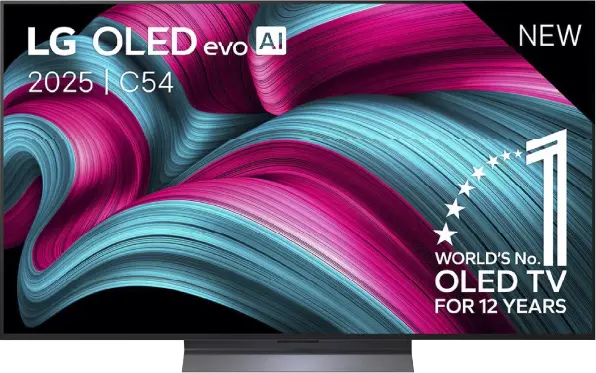
Panel type: WRGB OLED
Resolution: 3840x2160
System: Google TV
Model year: 2024
Complete the survey to find out the result

Panel type: WRGB OLED
Resolution: 3840x2160
System: WebOS
Model year: 2025
Complete the survey to find out the result

Overall rating
7.8
8.2
Movies and series in UHD quality
7.6
8.5
Classic TV, YouTube
8.0
8.9
Sports broadcasts (TV and apps)
8.1
8.6
Gaming on console
8.8
9.4
TV as a computer monitor
7.6
8.6
Watching in bright light
5.6
6.2
Utility functions
9.4
7.9
Apps
9.6
9.1
Sound quality
7.5
7.2
Complete the survey to find out what fits your preferences
Advantages
Excellent contrast
Google TV – intuitive system, easy access to applications, backlit remote.
Very good motion fluidity – 120 Hz, advanced smoothing system.
Great Dolby Vision support
Very good viewing angles
Superb built-in audio system
Excellent black levels and infinite contrast thanks to the OLED panel
Above-average brightness (for an OLED TV)
Nearly reference image quality after calibration
A full suite of features for gamers: 4xHDMI 2.1, low input lag, HGiG, VRR and more
Very good motion smoothness – 144 Hz OLED panel
Intuitive and modern WebOS system
Convenient Magic remote control with gyroscope
Disadvantages
Poor gradation – visible transitions between dark and light colours
Brightness in daylight – better for night screenings than for use in daylight
Only 2 HDMI 2.1 ports – one of which is ARC.
Different versions of the remote in derivative models – it's hard to predict which version we will get
Average reflection suppression – it can be distracting in very bright light
No support for DTS:X – an external amplifier is required for full compatibility with this format
Our verdict
LG C5 is a very successful continuation and, in some aspects, even a step forward compared to last year's model C4. The biggest change is the significantly higher brightness – for the first time in the history of the C series, the barrier of 1000 nits has been exceeded, which greatly improves the quality of the HDR effect. Both films and series look more dynamic as a result, and bright scenes finally have the proper "glow". After calibration, the picture quality is nearly reference-level, and one could get the impression that we are dealing with equipment that is much more expensive than its price suggests. C5 is also one of the best choices for gamers – four full HDMI 2.1 ports, low input lag, support for VRR, G-Sync, and correctly implemented HGiG. Additionally, the 144 Hz panel makes not only gaming but also watching sports pure pleasure. The convenient WebOS system and the Magic remote with cursor control function also deserve praise – everything works smoothly and intuitively. This is a television that you simply want to use.
However, there were a few minor reservations. This year, LG has decided to abandon support for DTS codecs, which may be problematic for those using physical media and collections of Blu-ray films. It is also worth noting the confusion regarding the different versions of the remote – depending on the model designation, we may receive a completely different remote than the one we held during our tests. Despite these few comments, LG C5 is a television that makes an excellent impression in almost every regard. Brightness, colours, gaming features, smoothness of the image, and overall build quality make it one of the best OLEDs in its class.
TV appearance




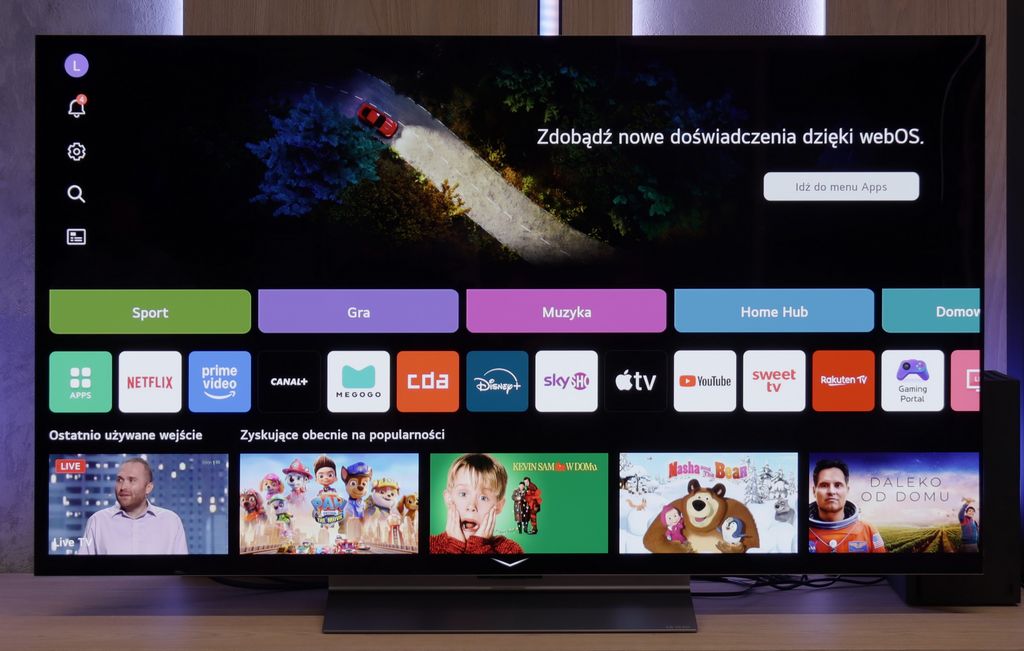
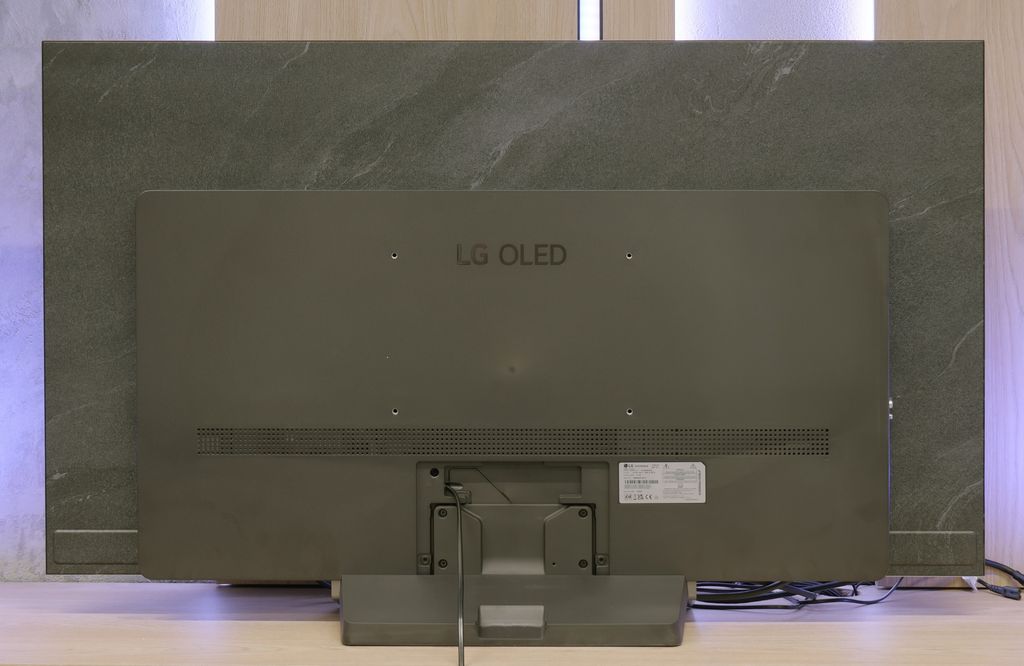
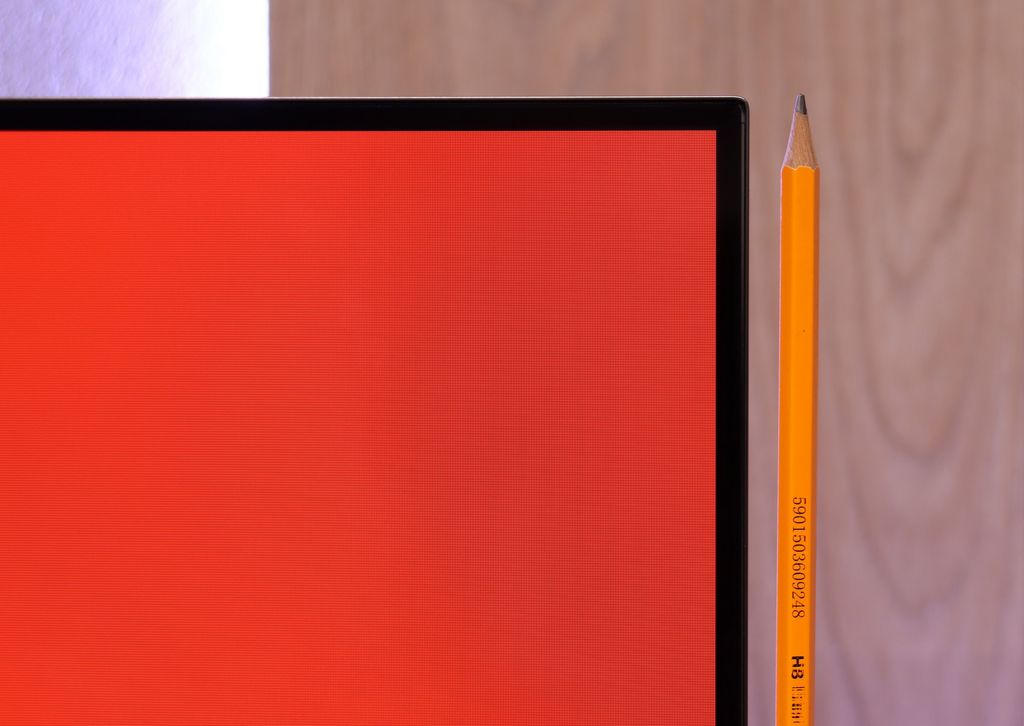
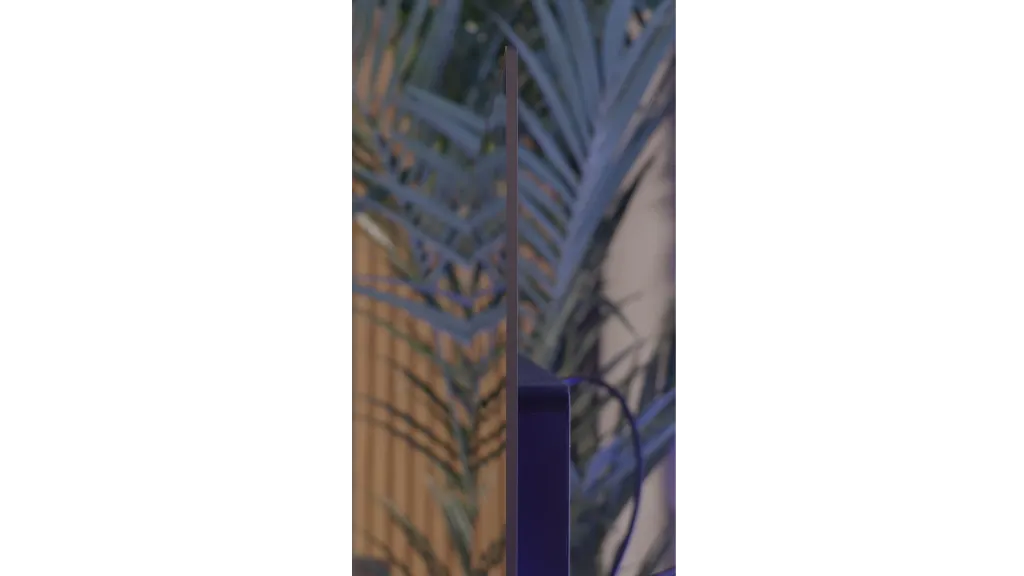
Contrast and black detail
10/10
10/10
Contrast:

Result
∞:1

Result
∞:1

Result
∞:1

Result
∞:1

Result
∞:1

Result
∞:1

Result
∞:1

Result
∞:1

Result
∞:1

Result
∞:1
Halo effect and black detail visibility:

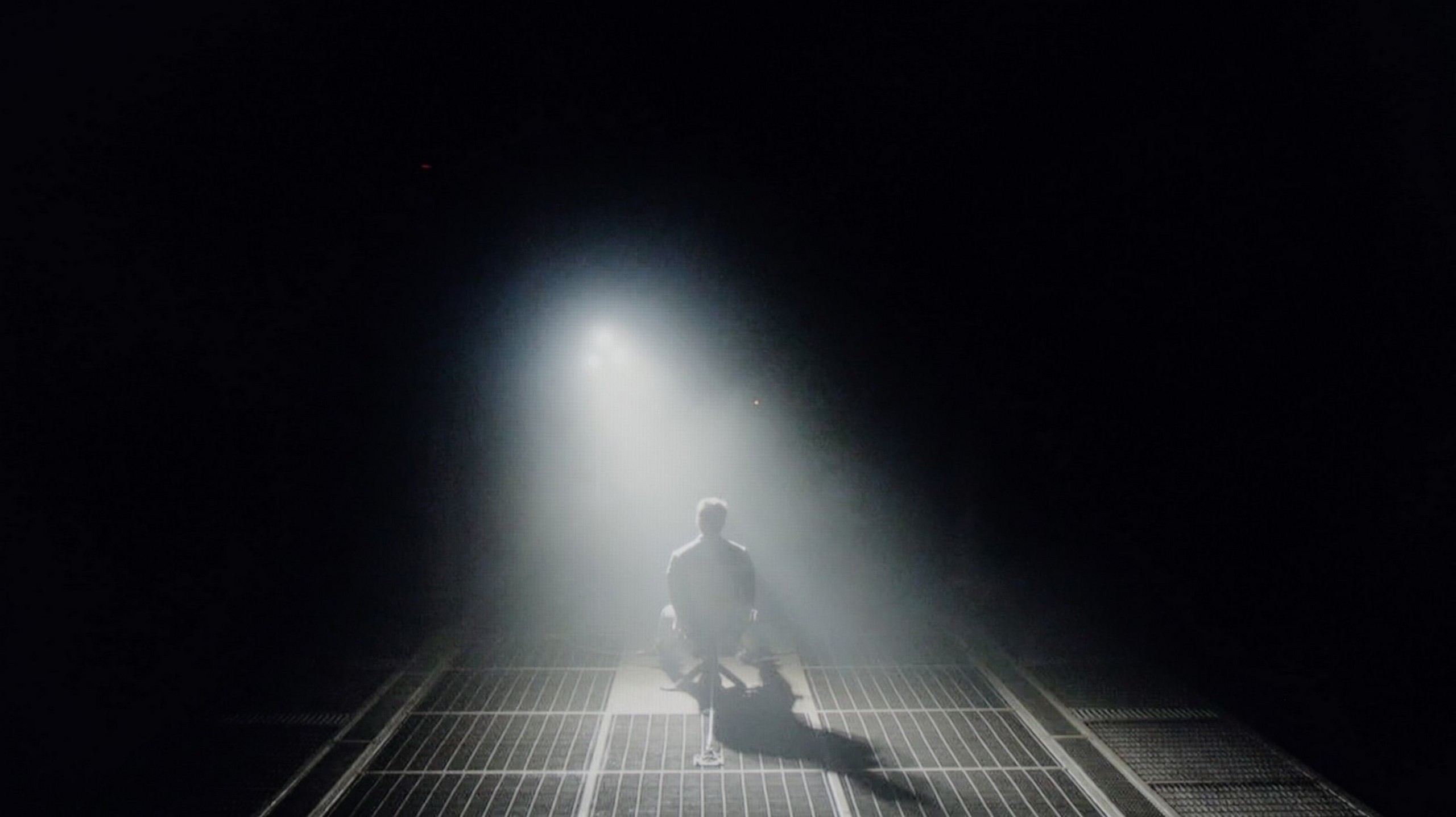
The Sony Bravia 8 television, equipped with an OLED panel, offers exceptional black and contrast quality. Thanks to OLED technology, each pixel emits its own light, providing excellent black depth and precision in light reproduction. In tested scenes, such as sequences from the films Oblivion and Sicario 2, the television achieves perfect light separation, resulting in a very detailed and realistic image, even in challenging contrast conditions. The Sony Bravia 8 truly stands out among other models in this category.
In the category of black and contrast, the LG C5 fits perfectly into what we have come to expect from OLED televisions – it is simply ideal. Thanks to the use of an organic matrix (WOLED), each pixel shines independently, which results in infinite contrast and perfect black. There are no halos, streaks, or other typical LCD television artifacts here. Details in bright parts of the image are perfectly visible, and watching in a darkened room is pure pleasure. If someone is looking for a television for evening screenings with great contrast – the C5 is a very strong contender.
HDR effect quality
6.8/10
7.2/10
Luminance measurements in HDR:

Result
849 nit

Result
865 nit

Result
888 nit

Result
880 nit

Result
469 nit

Result
1079 nit

Result
1059 nit

Result
1120 nit

Result
1094 nit

Result
707 nit
Scene from the movie “Pan” (about 2800 nits)


Scene from the movie “Billy Lynn” (about 1100 nits)


Static HDR10


Dynamic: Dolby Vision
Dynamic: Dolby Vision


HDR luminance chart:
LG OLED C5
HDR luminance
Luminance of RGB colors
Sony Bravia 8 (XR80)
HDR luminance
Luminance of RGB colors
Sony Bravia 8 performs reasonably well in terms of HDR brightness. A maximum brightness level of 880 nits is satisfactory and allows for enjoyable light effects in most scenes. In the tested segments of the films Life of Pi and Sicario 2, the television looks really good, offering vibrant and detailed images that fully convey the atmosphere of these productions.
However, a greater challenge is presented by a scene from the film The Meg, where the screen is entirely very bright. In such situations, the limitations of OLED technology are evident, as the television loses brightness, dropping to about 450 nits. This decline is less satisfactory, especially when the entire scene requires intense lighting. Despite these limitations, Sony Bravia 8 remains a competitive model, offering excellent coverage of the DCI-P3 colour gamut and a BT.2020 standard coverage of 74%. As a result, colours are rich and details are precise, which significantly enhances the quality of HDR content consumption and makes viewing a pleasant experience.
LG C5 finally does what we have been waiting for years in the C series – it exceeds 1000 nits of brightness! This is a significant change compared to previous models in the series, and it is very important – because most HDR content on streaming platforms is now created around such luminance. The image finally has the proper "shine," and the details in the highlights look as they should even without the use of dynamic metadata. However, there are scenes where the C5, like most OLED televisions, has certain issues. Especially when the screen needs to light up completely. In our test sequences, such as the bright shot from the film The Meg, the brightness clearly drops. Don't get us wrong, this result is not bad; it's more a reminder that OLED technology still has its limitations. Year by year they are becoming smaller, but still.
As for the colours? They are very good. Although the C5 does not match OLEDs with QD-OLED or Tandem RGB panels, the DCI-P3 coverage of 97% and 73% BT.2020 will satisfy even the more demanding viewers. The colours are saturated, natural, and very consistent in HDR material.
Factory color reproduction
7.2/10
8.2/10


Factory Mode
After calibration

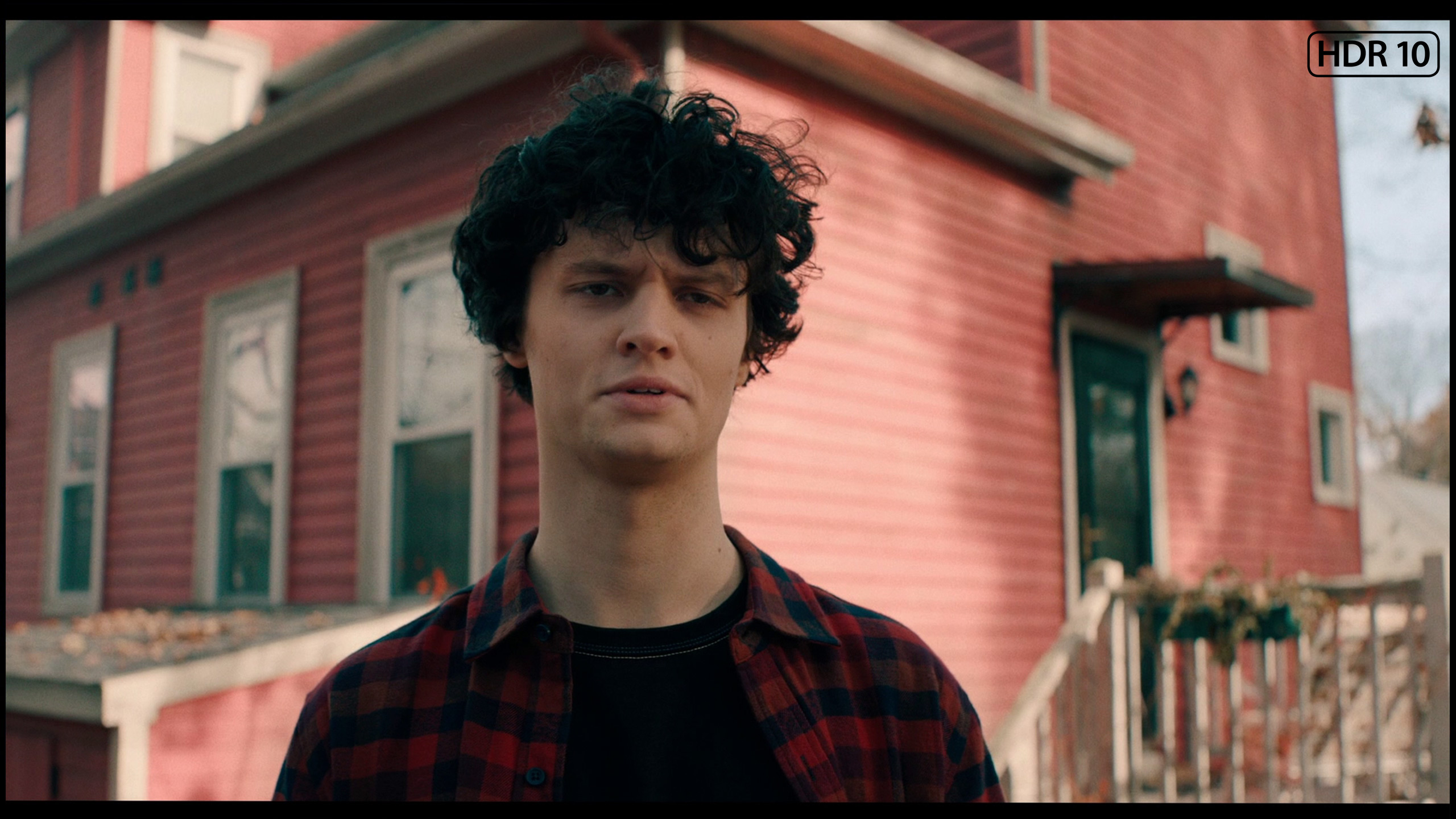
Factory Mode
After calibration
The best factory mode available on the Sony Bravia 8 television is IMAX Enhanced, which provides the most cinematic experience, although it is not perfectly set up. The television tries to faithfully reproduce cinematic settings, but certain shortcomings are noticeable. Starting with the white balance, both for SDR and 4K materials, a pronounced blue tint can be observed. This causes the image to appear too cold, stripping it of its naturalness. Tests using Colour Checker show that colours shift towards cooler tones, which may affect the accuracy of colour reproduction and make the image less realistic.
As for brightness and contrast characteristics, the gamma shows a significant drop at the end of the chart. This means that dark details may be too dark and bright elements too bright, resulting in a loss of subtlety and becoming less visible. As seen in the sky - in the comparative photo. In turn, the EOTF curve is well above the reference value, causing bright elements of the image to be too intense. As a result, users may perceive the image as unnatural, and bright areas may lose details, negatively impacting the overall viewing quality.
LG C5, like other televisions we have tested, has been checked in the best possible factory mode – which remains the Filmmaker Mode. And here we have good news: in SDR materials, LG has once again done a solid job. The white balance and colour reproduction right out of the box are at a very high level. Most errors – both in balance and in the colour test (Colour Checker) – did not exceed a ΔE value of 3, which is the threshold above which differences become visible to the naked eye. Such factory settings would be desirable in a significantly larger number of televisions!
However, the situation looks different for HDR content, which is precisely what the C series was created for. Here, the C5 performs somewhat worse. The excessive presence of blue in the white balance causes the image to appear distinctly cooler – which affects, for instance, unnaturally pale skin tones or a slightly shifted tone of the entire scene. Fortunately, LG provides very precise calibration tools, and we – as always – made use of them.
Color reproduction after calibration
8.2/10
9.4/10



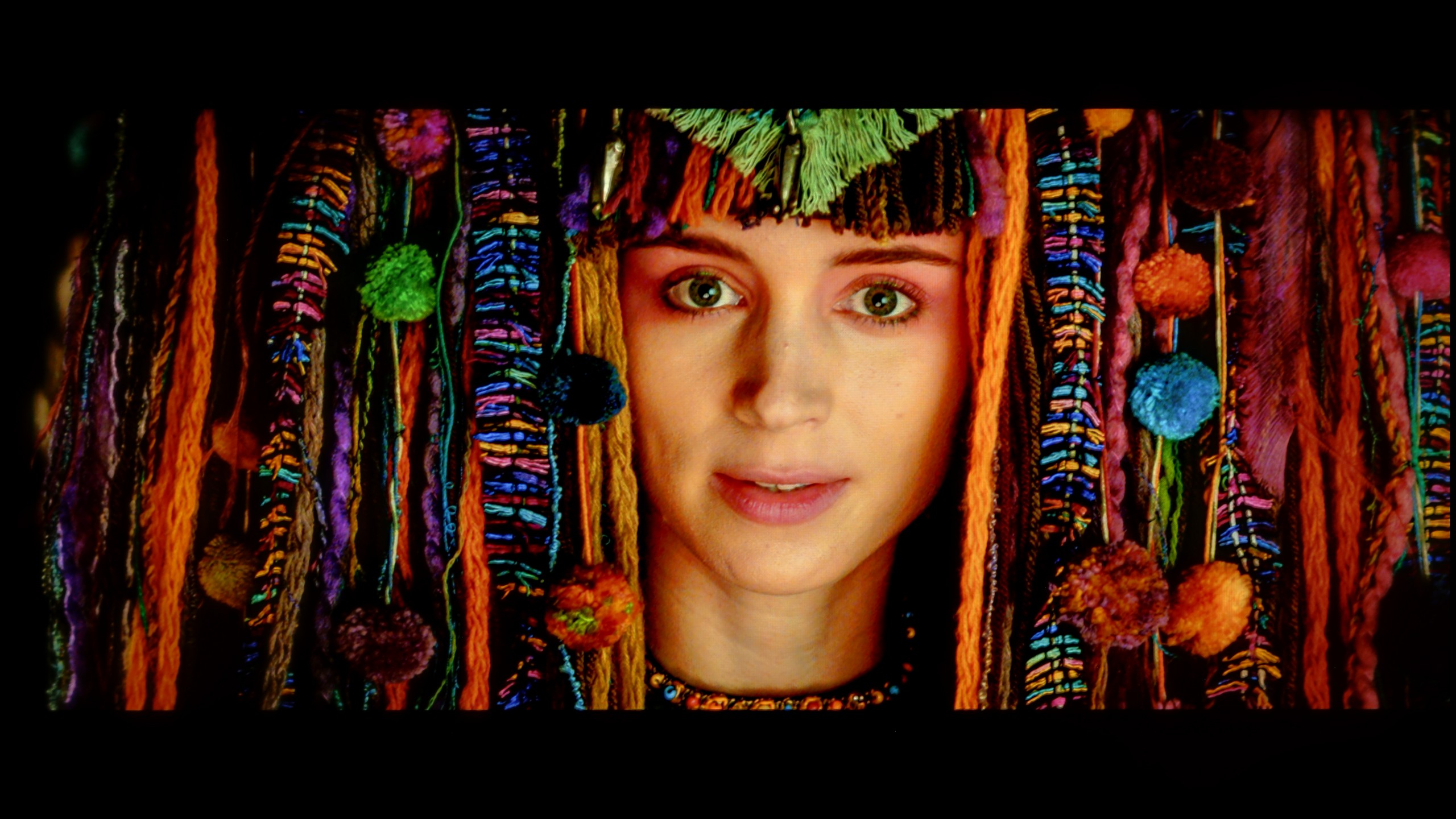
The calibration process of the Sony Bravia 8 television has brought significant improvements in image quality. The white balance has been noticeably enhanced, for both SDR and 4K HDR content, with minimal errors in the middle of the graph. Gamma has proven to be one of the biggest beneficiaries of calibration – it has been completely rid of previous dips, which has significantly impacted brightness stability and better detail reproduction in the darker parts of the image. The EOTF curve has also been levelled, making bright elements of the image appear more natural, and the overall tonal dynamics are now more balanced.
However, the most attention should be paid to colour reproduction, where, despite calibration, certain issues still persist. Sony has omitted the use of a CMS system in this model, which allows for very precise control over colours. As a result, the Colour Checker test for 4K materials still shows significant errors in colour samples. Despite these difficulties, we recommend performing calibration, as the effects are noticeable and significantly enhance image quality, particularly in terms of brightness and contrast.
We must honestly admit – in the case of the LG C5, very little was needed to achieve nearly perfect picture quality. After calibrating, we managed to reach compatibility with reference screens at a level that impresses even when compared to significantly more expensive models. The image after our adjustment looks exactly as filmmakers and series creators would want it – without colour distortions, with natural depth and subtle texture. LG has done a great job this year regarding factory settings and calibration potential. Chapeau bas!
Smoothness of tonal transitions
5/10
8.2/10





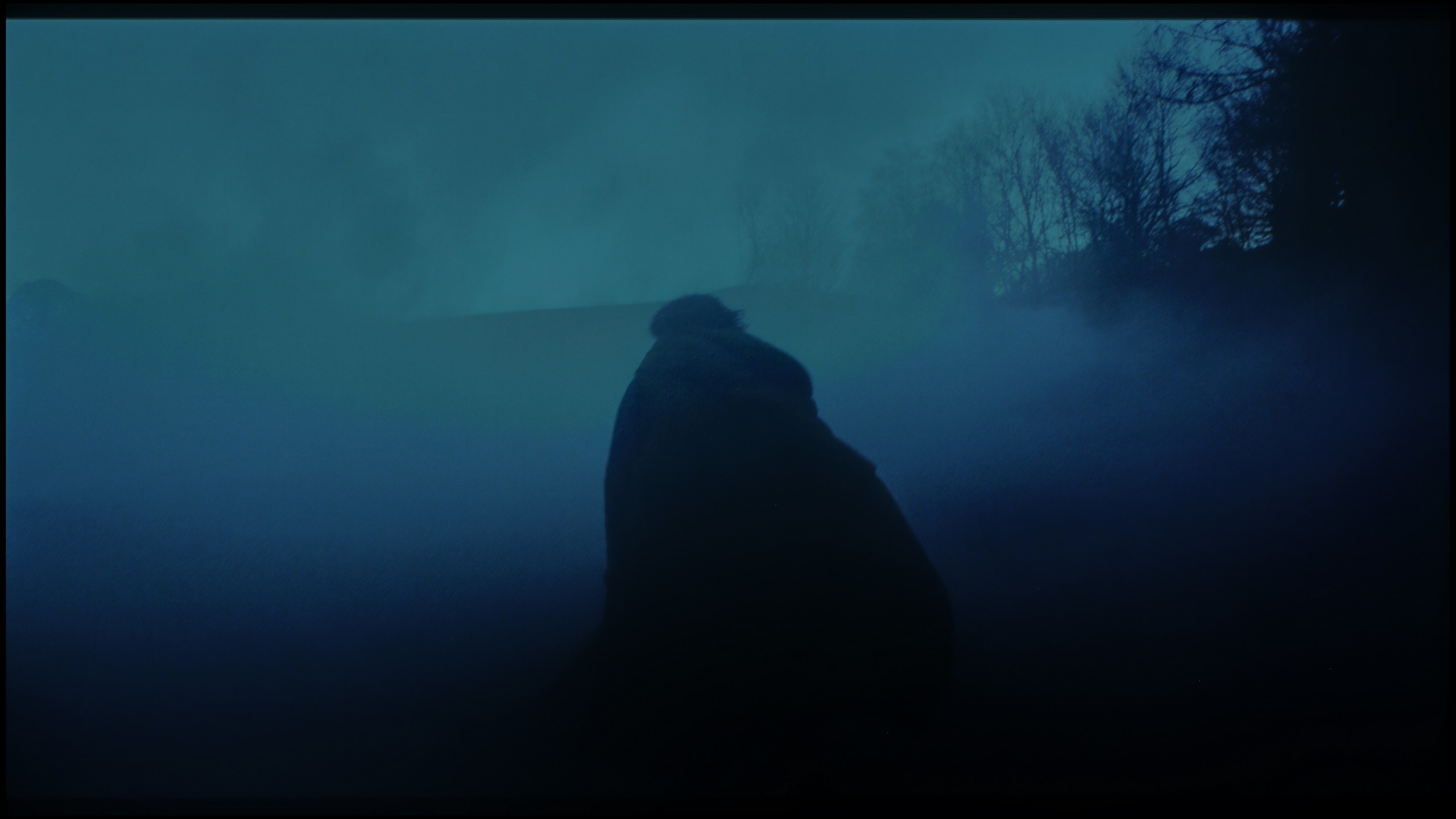

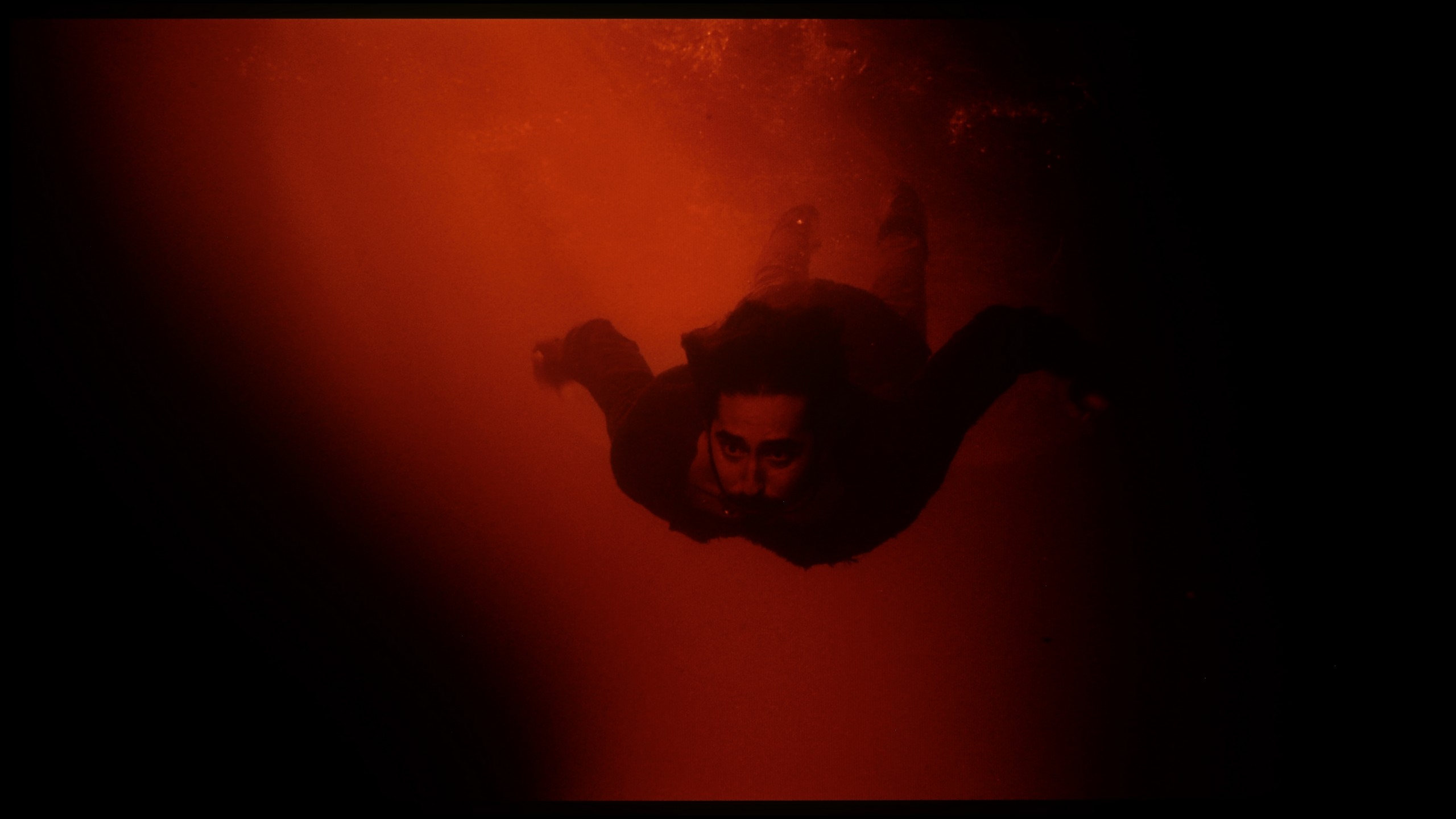




The grading in 4K materials is simply poor and clearly disappointing. There are noticeable seams both in dark and light colours, which affects the image quality and lowers the overall satisfaction with watching high-definition materials. Something that has always been a strong point of Sony's processor evidently fails this time.
WOLED televisions have not been known for their perfect fluidity of tonal transitions until now. It has often been noticeable that there were subtle bands between colours – particularly in the darker parts of the image – which gave the impression that the hues did not transition smoothly, but rather "stair-stepped" slightly. This year, LG has made significant progress. In the C5 model, this issue has largely been eliminated. Indeed, in very dark scenes, subtle boundaries between colours can still be seen, but they are non-intrusive enough that hardly anyone except for more discerning viewers will notice them. For most users, the fluidity of tonal transitions in the C5 will simply be impeccable.
Image scaling and smoothness of tonal transitions
6.1/10
7.8/10
Smooth transition function

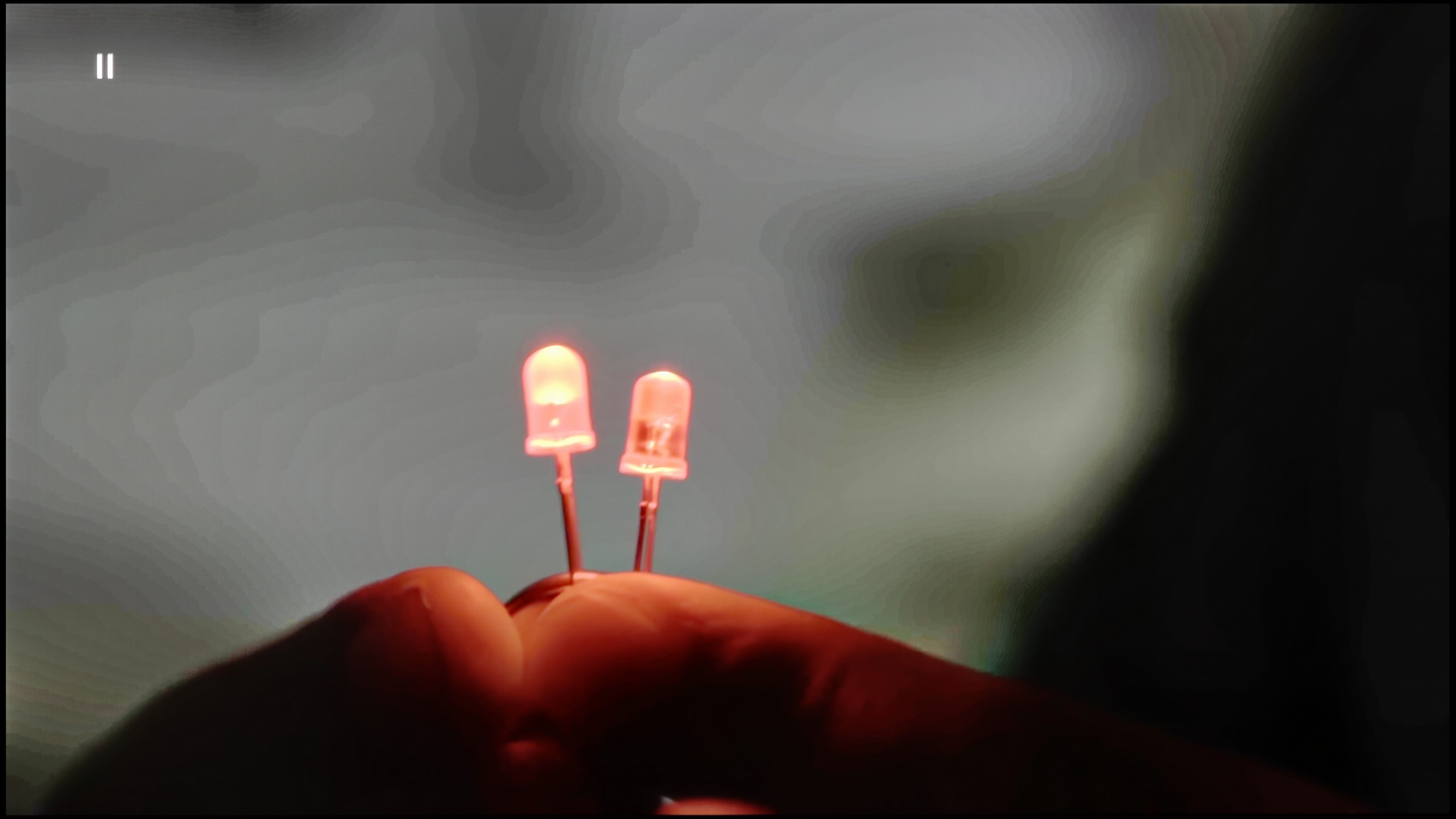
Image without overscan on the SD signal


The fluidity of tonal transitions in low-quality materials on the Bravia 8 is poor. Unfortunately, the soft gradation feature (which was available in previous models) is missing, which is a significant downside. The digital noise reduction feature can considerably improve tonal transitions; however, it also tends to remove some details, such as clouds in scenes from the film The Martian, which may not be to everyone's liking. As for digital processing, the Sony XR80 performs quite well. The model in test scenes was displayed without noticeable errors, and the branches in the background are not overly jagged. This shows that the Bravia 8 is capable of effectively processing complex low-resolution image details.
LG C5 handles lower quality materials really very well. One of the main problems older WOLEDs faced was posterisation – that is, unwanted “stair stepping” in colour transitions. The C5 utilises a system feature that smoothens these transitions, which works surprisingly effectively. The banding effect is nearly completely eliminated, and the picture gains in coherence. Compared to last year's model, we have the impression that this feature works slightly less effectively – but the good news is that it does not undermine the structure of the image. Film grain, textures, and details remain on the screen – nothing is unnaturally smoothed out.
The C5 also excels at enhancing the quality of older recordings. Thanks to the α9 Gen6 processor (8th gen), the "scaling to 4K" performs really solidly. The image is clear, the details are sharp, and the only minor downside might be slightly noticeable edge sharpening on some borders. However, there is no issue with overscan here – the image is neither artificially cropped nor shifted, which is a significant plus and still not a given.
Blur and motion smoothness
8.5/10
8.5/10

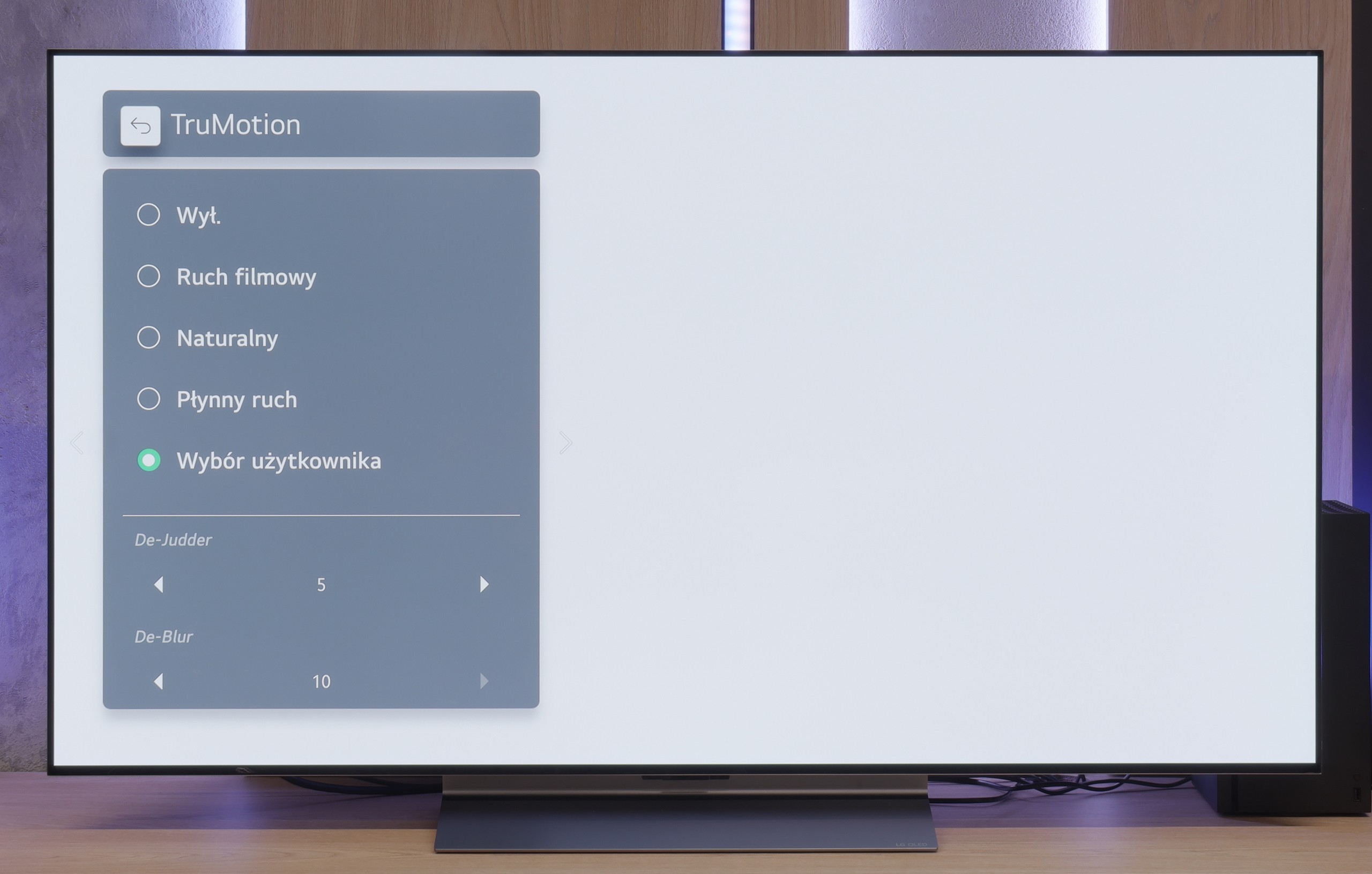
Blur (native resolution, maximum refresh rate):



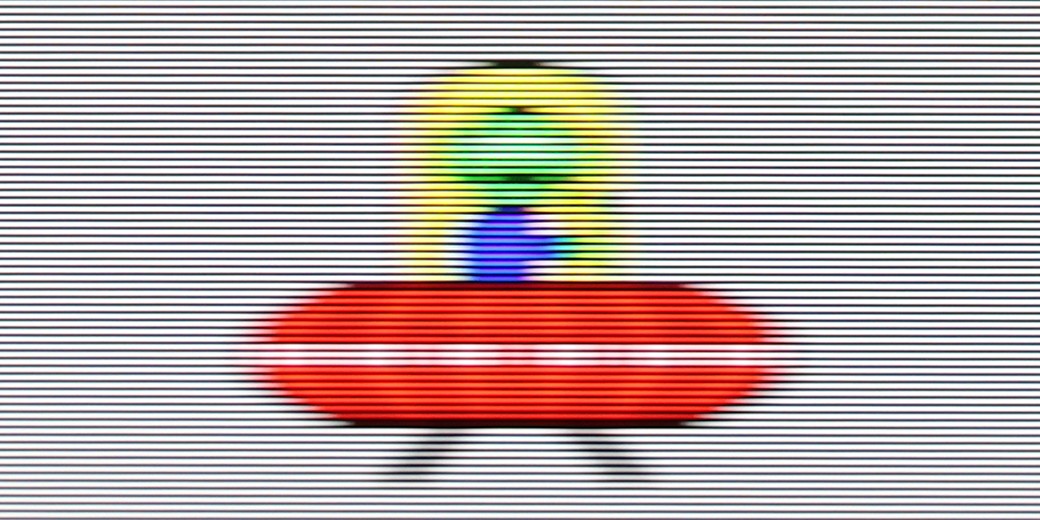

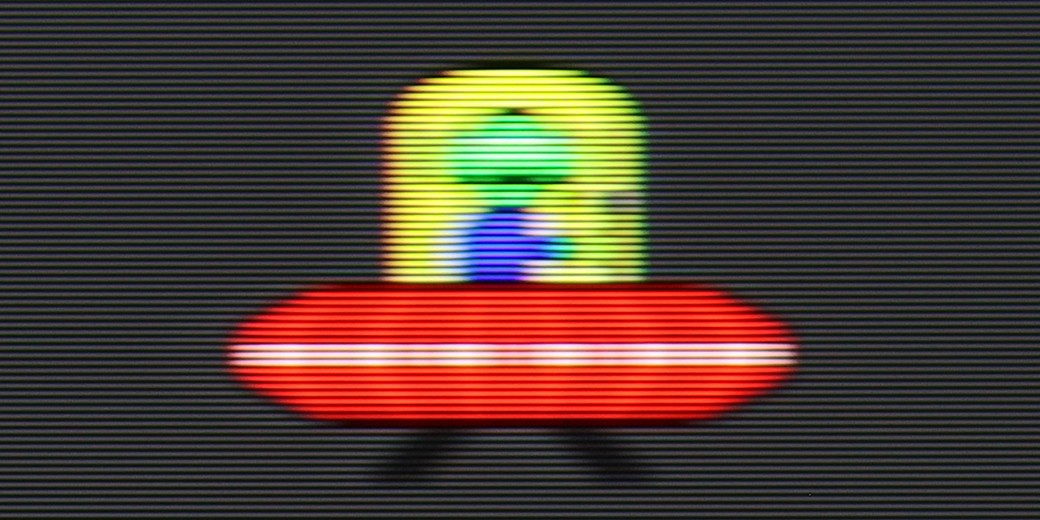
Blur (BFI function enabled):
Image flickers in this mode



Image flickers in this mode
Sony Bravia 8 offers a maximum refresh rate of 120 Hz, which forms the basis for smooth viewing of dynamic content such as sports and games. This ensures that movements are sharp and fluid. For more demanding users, the Sony XR80 television is equipped with an advanced motion smoothing system, which is divided into three segments: Smoothness (Film), Smoothness (Camera), and Clarity. The first two are responsible for regulating the degree of blur and smoothness of the image. The third option, concerning clarity, will be described in more detail below. Each of the parameters can be adjusted to personal preferences, allowing users to find the optimal setting tailored to their individual needs.
The LG C5 is equipped with a 144 Hz display, and this, combined with the virtually zero response time of the OLED pixels, makes it one of the best screens for watching dynamic content. It doesn't matter whether it's sports, fast-paced games, or just action – the image is razor-sharp.
And what about movies at 24 frames? LG thought of that too. The built-in "TruMotion" smoother allows you to adjust the picture to your own preferences. The "de-judder" slider increases fluidity in films, while "de-blur" gently reduces motion blur – though to be fair, it is nearly invisible here anyway.
Console compatibility and gaming features
8.1/10
10/10
- ALLM
- VRR
- VRR range48 - 120Hz40 - 144Hz
- Dolby Vision Game Mode
- Correct implementation of HGIG
- 1080p@120Hz
- 1440p@120Hz
- 4K@120Hz
- Game bar

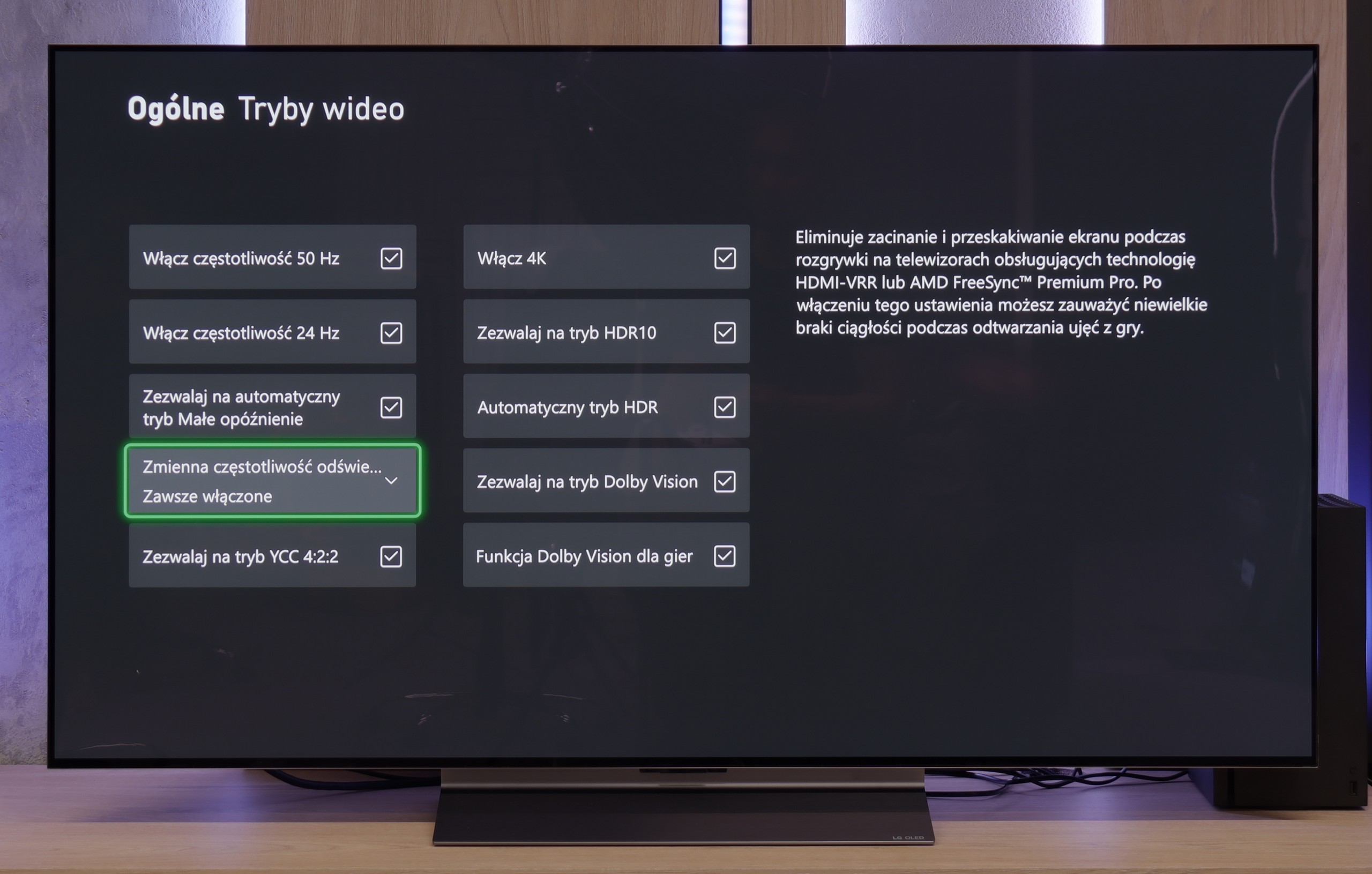

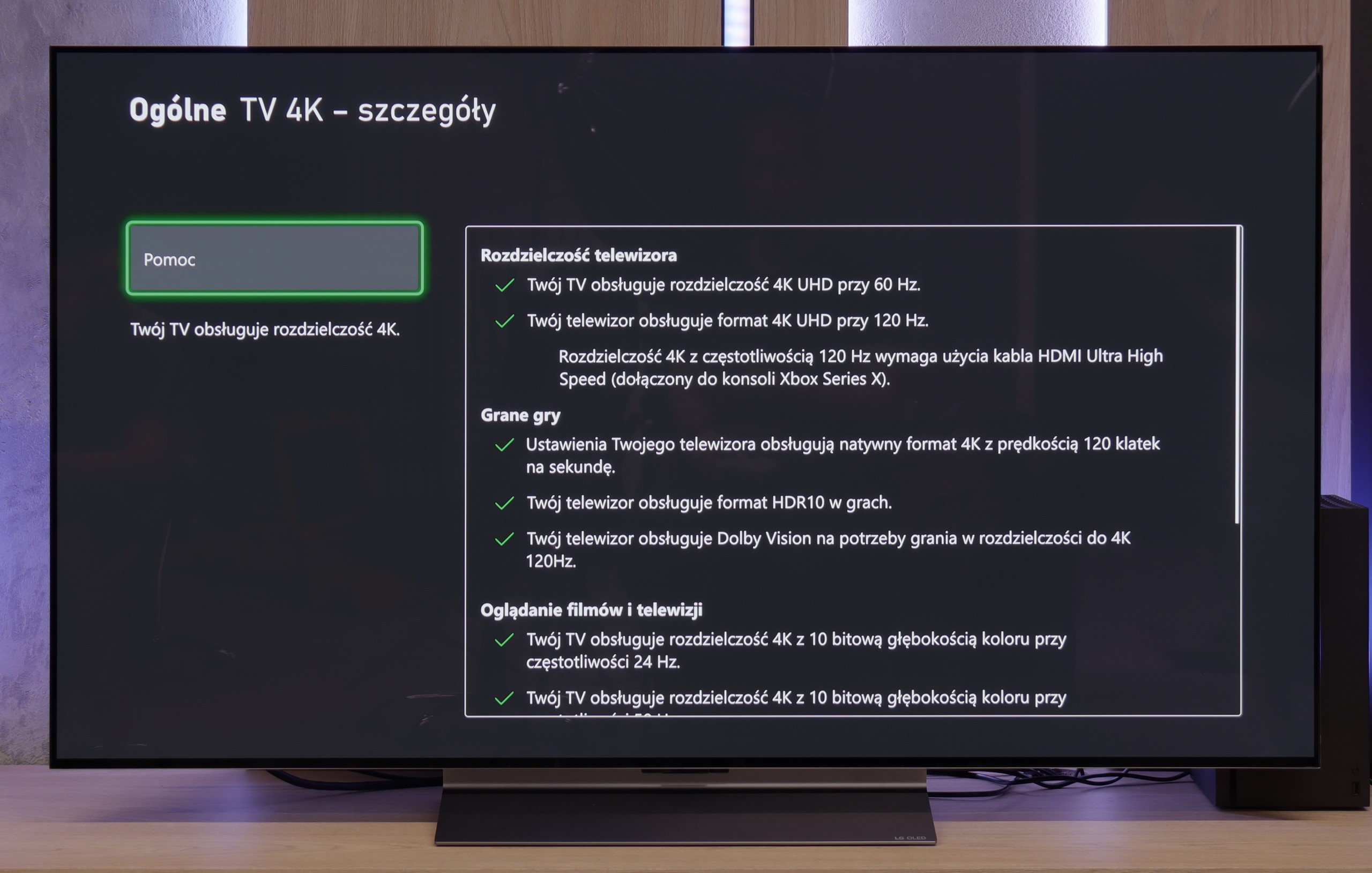

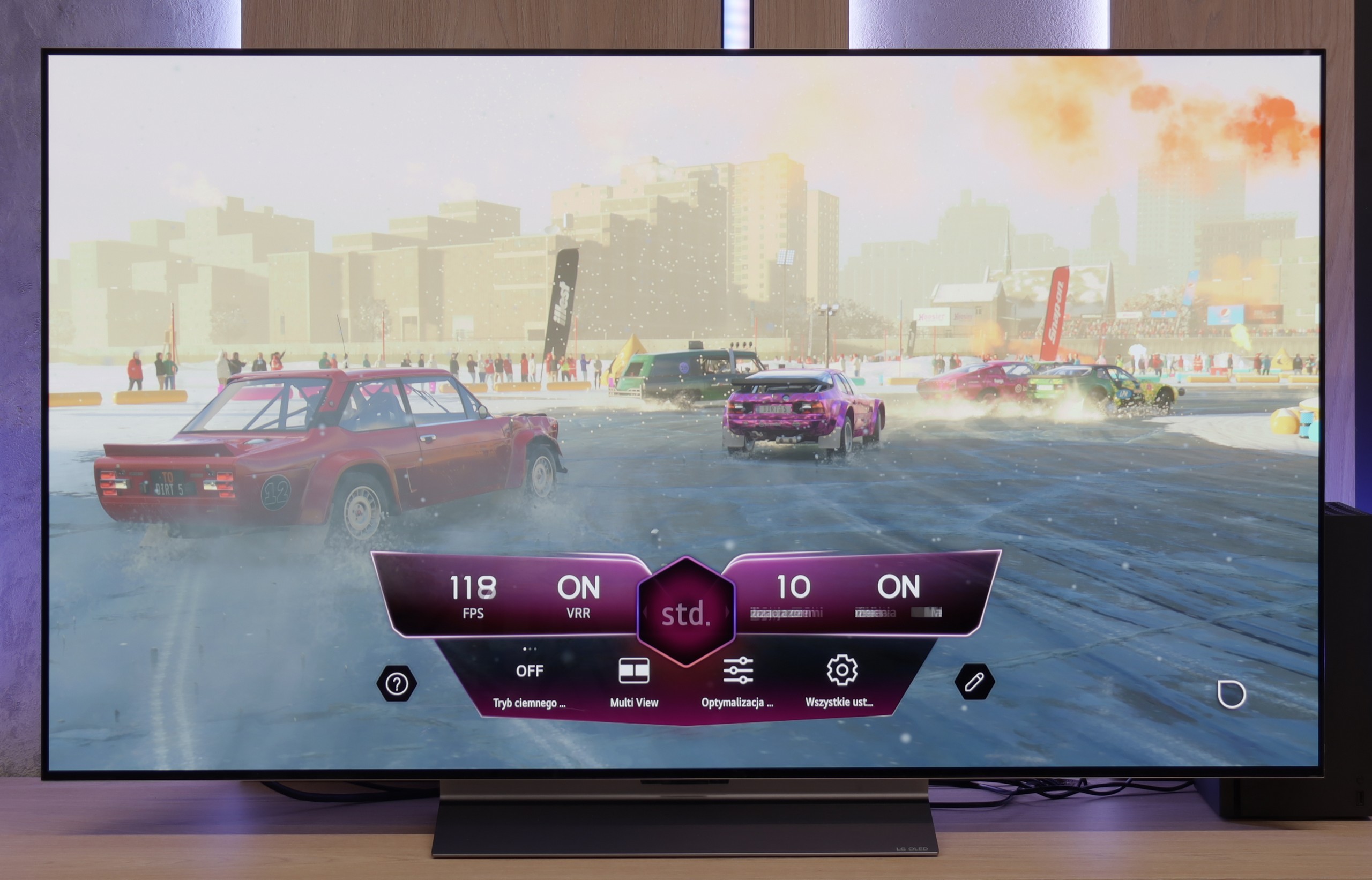

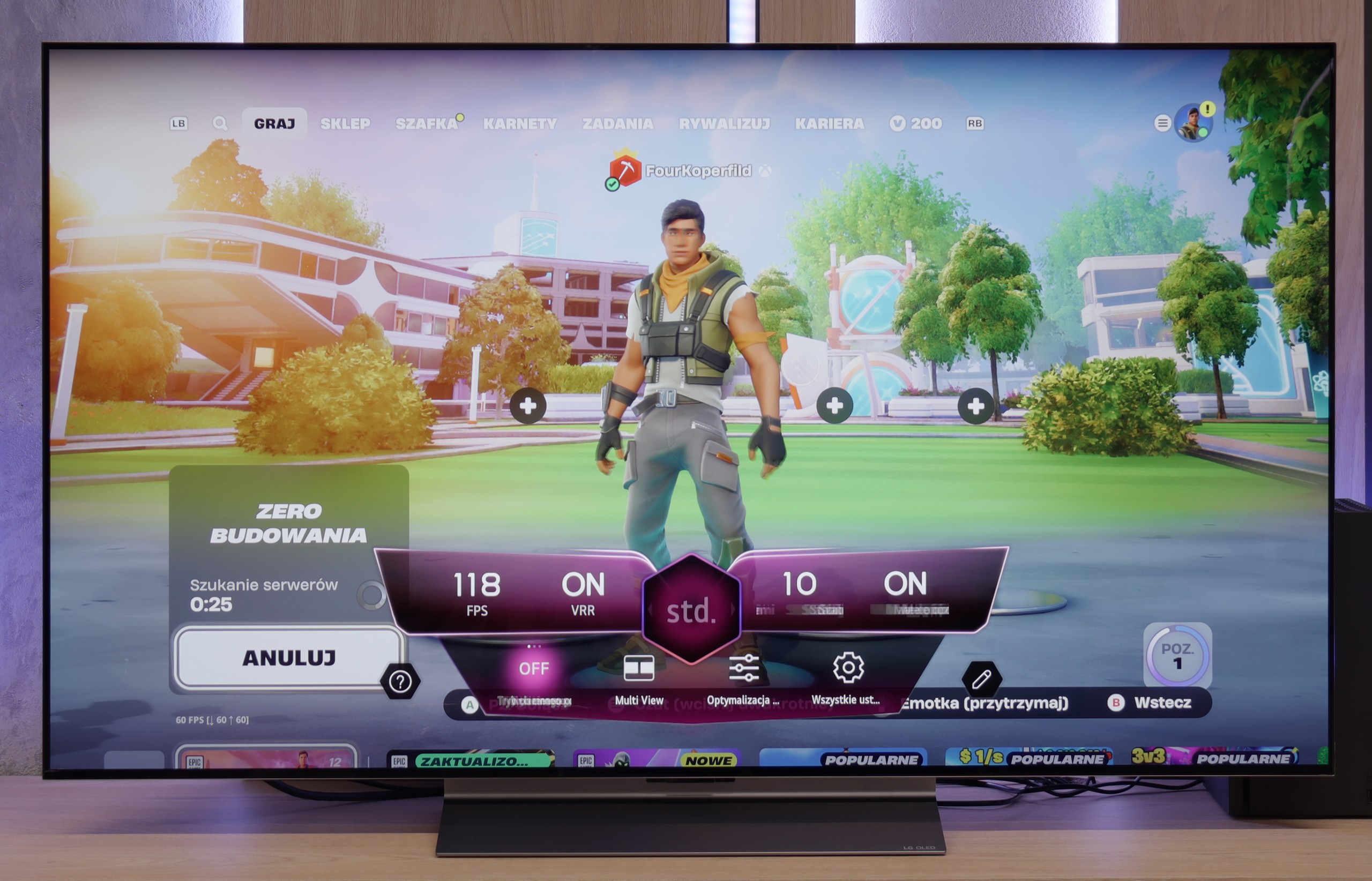
Sony Bravia 8 has significantly improved its compatibility with consoles compared to earlier models. The television supports variable refresh rate (VRR), which eliminates screen tearing, and it synchronises with graphics cards to ensure smooth image display. The automatic low latency mode (ALLM) reduces input lag, which is crucial in fast-paced games. Dolby Vision with low latency additionally provides impressive HDR effects that look stunning during gameplay.
The Sony XR80 television also features a Game Bar, allowing quick access to settings and monitoring parameters while gaming. An interesting option is the ability to enable a virtual crosshair on the screen, which can provide a slight edge in shooting games.
A downside is the lack of support for 1440p@120hz resolution, which could facilitate gaming for users with less powerful graphics cards. Additionally, the Sony XR80 only has two HDMI 2.1 ports, one of which is typically used to connect an audio system via eARC, limiting the number of available inputs for connecting next-generation consoles.
LG C5 is a television designed with gamers in mind – and there isn't a hint of exaggeration in that. It's hard to find anything to criticise here. We have a refresh rate of 144 Hz, full support for VRR, ALLM, and as many as four HDMI 2.1 ports with a full bandwidth of 48 Gb/s. For those who have an Xbox, PS5, Nintendo, and a gaming PC all in one room – there are no limitations, everything can be connected without any hassle.
The HDR configuration for games also poses no problems. The television correctly handles the HGiG mode, which allows for an image that matches the creators' intentions. For those interested, there is also Dolby Vision in Gaming mode, although we still recommend HGiG as the most predictable and "pure" version of HDR in games.
It also features Game Bar, which serves as a "command centre" for gamers. Everything important, from VRR settings, to picture modes, to frame rate information – is at our fingertips. The interface is simple and clear. It may look like it’s from a spaceship simulator, but it serves its purpose and just works; as it should.
C5 is truly a complete set for any gamer.
Input lag
10/10
10/10
SDR
HDR
Dolby Vision
Low input lag in Sony Bravia 8 is undoubtedly an advantage – results at the level of 13 ms are excellent and provide outstanding responsiveness. The Dolby Vision mode is also noteworthy, which performs remarkably well in this model. In many cases with other manufacturers, this mode looks much worse, but here you can enjoy its full potential, especially in gaming.
The reaction time of the LG C5 to our movements with the controller is exemplary. Regardless of the chosen resolution or frame rate, the delay is so low that in practice it is almost imperceptible. Playing on this television is simply pure pleasure. Some delay is introduced by the Dolby Vision mode, which should come as no surprise – this applies to virtually every television on the market equipped with this mode. Nonetheless, even with Dolby Vision active, the input lag remains low enough that gameplay is still smooth and responsive.
Compatibility with PC
7.6/10
8.6/10

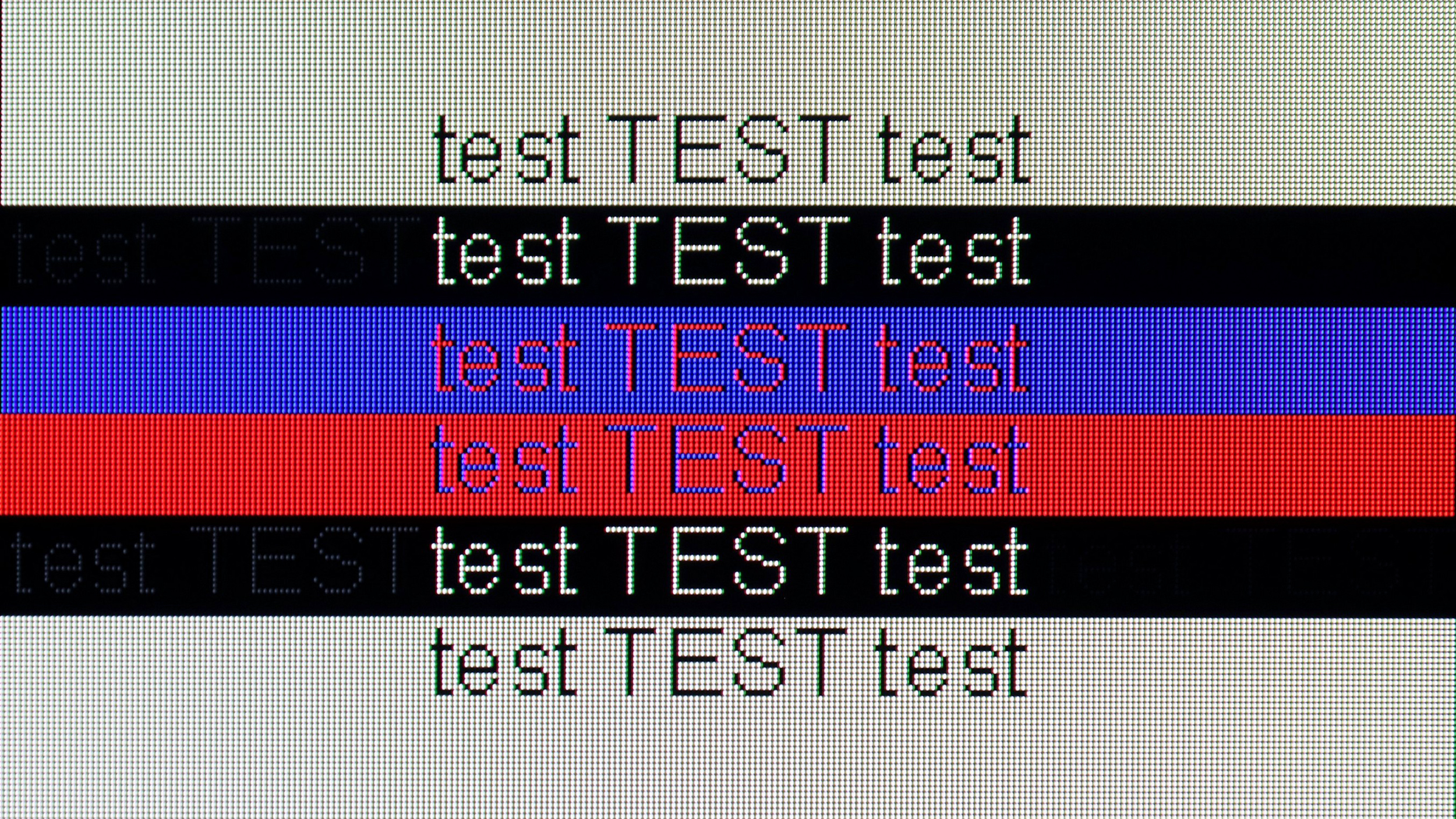
The cooperation of Sony Bravia 8 with computers is very good, similar to most televisions with WOLED panels. The readability of fonts is at a high level, making work with documents or browsing websites comfortable. The low input lag of 5 ms makes an impressive impression and provides excellent responsiveness during gameplay. The only downside is that the fonts displayed on a dark background appear slightly muted.
C5 – as we wrote – is a television created for gamers, so playing even on a computer is a real pleasure. The 144 Hz panel, low input lag, and original G-Sync certification only confirm this.
When it comes to work – it is also very good. Fonts are legible, the interface is clear, but it should be remembered that we are dealing with a WOLED panel and a WRGB subpixel arrangement. (slight shadows visible behind the font). Therefore, if someone plans to place the C5 on a desk in smaller sizes like 42 or 48 inches for everyday office work, it is worth checking this for themselves beforehand. For occasional desktop use and primarily for gaming – there are no reasons for concern.
Viewing angles
7.3/10
7.4/10
The viewing angles on the Sony Bravia 8 are very good, as befits a television with an OLED panel. As a result, the image retains its colours and contrast even when viewed from a large angle. The only televisions that will be better in this category are models equipped with MLA (Meta-Lens Array) technology and QD-OLED, offering even wider viewing angles and better image quality at extreme angles.
The viewing angles on the LG C5 are nearly perfect. Although they fall slightly short compared to technologies such as QD-OLED or WOLED with micro-lens MLA, the picture quality from a large angle still leaves a great impression. Colours remain vibrant, and the screen does not lose much of its brightness even when set at more demanding angles.
Addressing questions that circulated last year regarding the C4 model – we did not notice any green tints, pinking, or other effects in the case of the C5, which can be read about online. The picture at an angle looked really clear.
Daytime performance
5.6/10
6.2/10

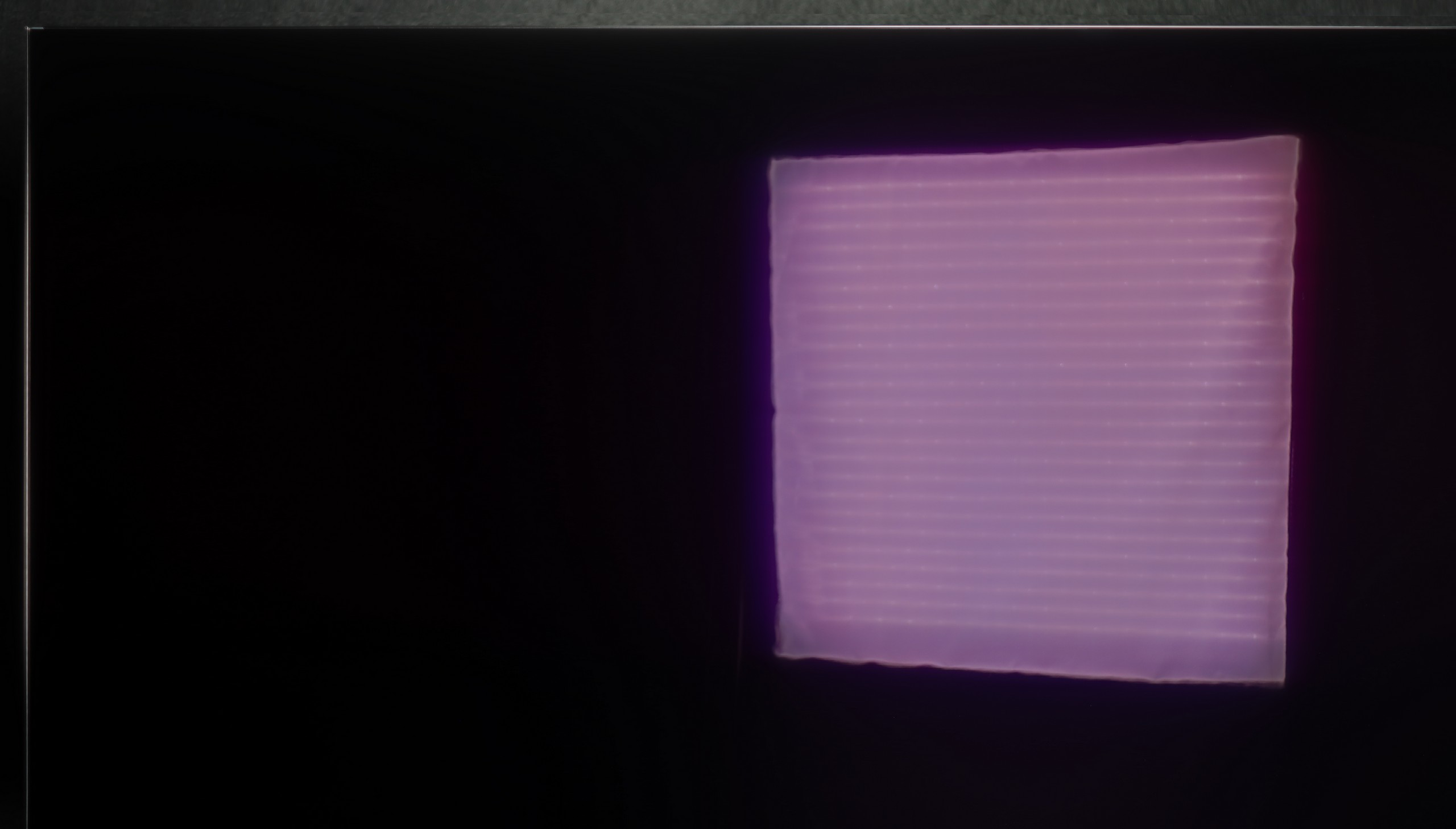

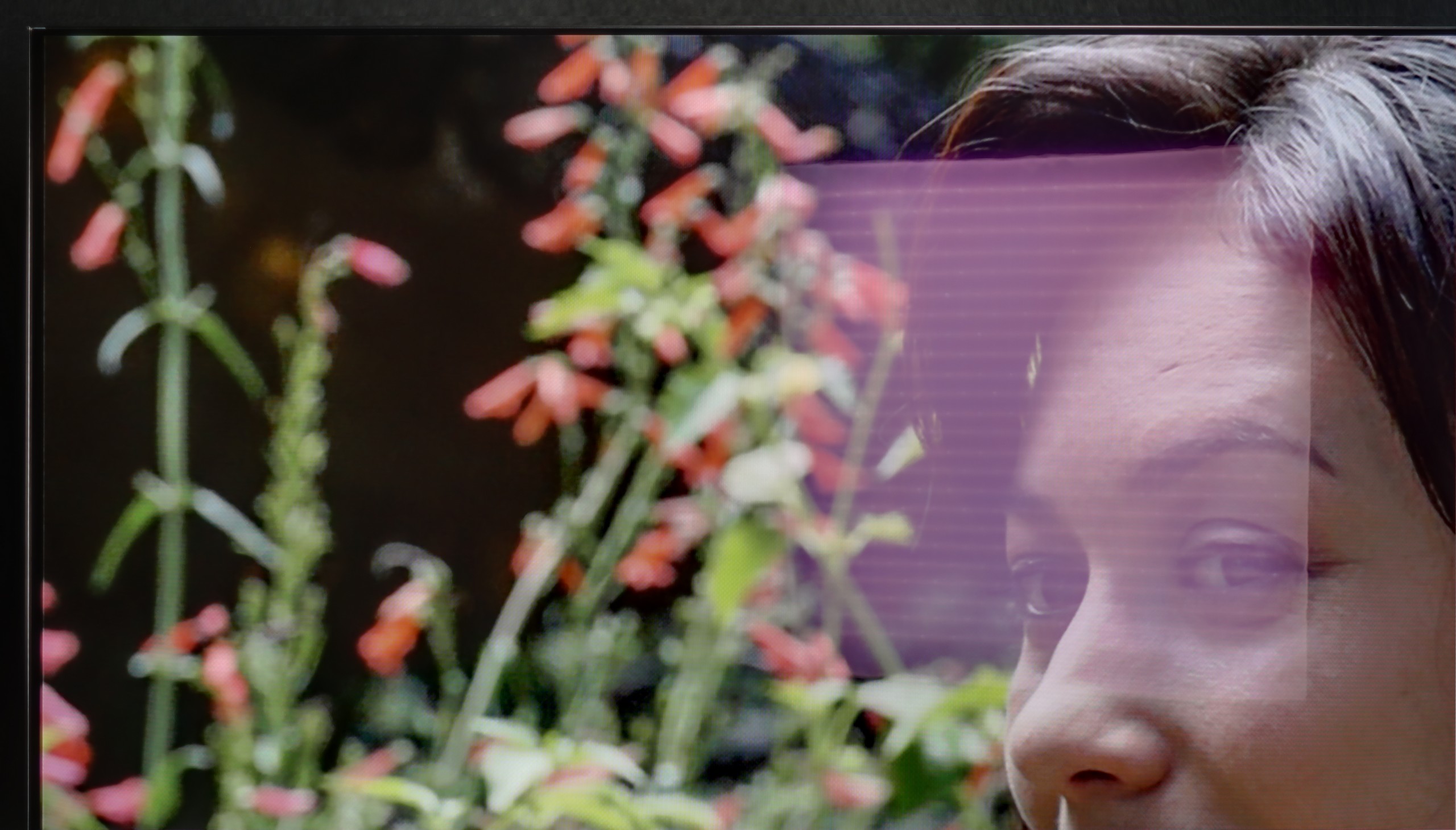
Panel brightness
Average luminance SDR
LG OLED C5: 435 cd/m2
Sony Bravia 8 (XR80): 335 cd/m2
The glossy panel in the Sony Bravia 8 effectively dampens reflections, which take on a slightly bluish hue. Unfortunately, the brightness level of 330 nits is not particularly impressive, making this television better suited for evening viewing. During the day, to ensure optimal image reception, it is advisable to help by closing the curtains, which will reduce the impact of external light.
LG C5 is one of the brighter OLED televisions on the market, so it should perform well in moderately bright rooms without major issues. The average brightness in SDR mode is around 450 nits – a value sufficient to keep the image readable even during the day. Importantly, the black does not lose depth and does not become "grey", which can still be an issue with QD-OLED panels.
A greater challenge, however, may be reflections. The WOLED panel used in the LG C5 has a glossy coating typical of this technology, which only partially diffuses reflections. In a well-lit living room with large windows, you can see your reflection on the screen – slightly muted, but still visible. In a very sunny room, it may turn out that curtains or blinds will be necessary to fully enjoy the great picture quality.
Panel details
Subpixel Structure:

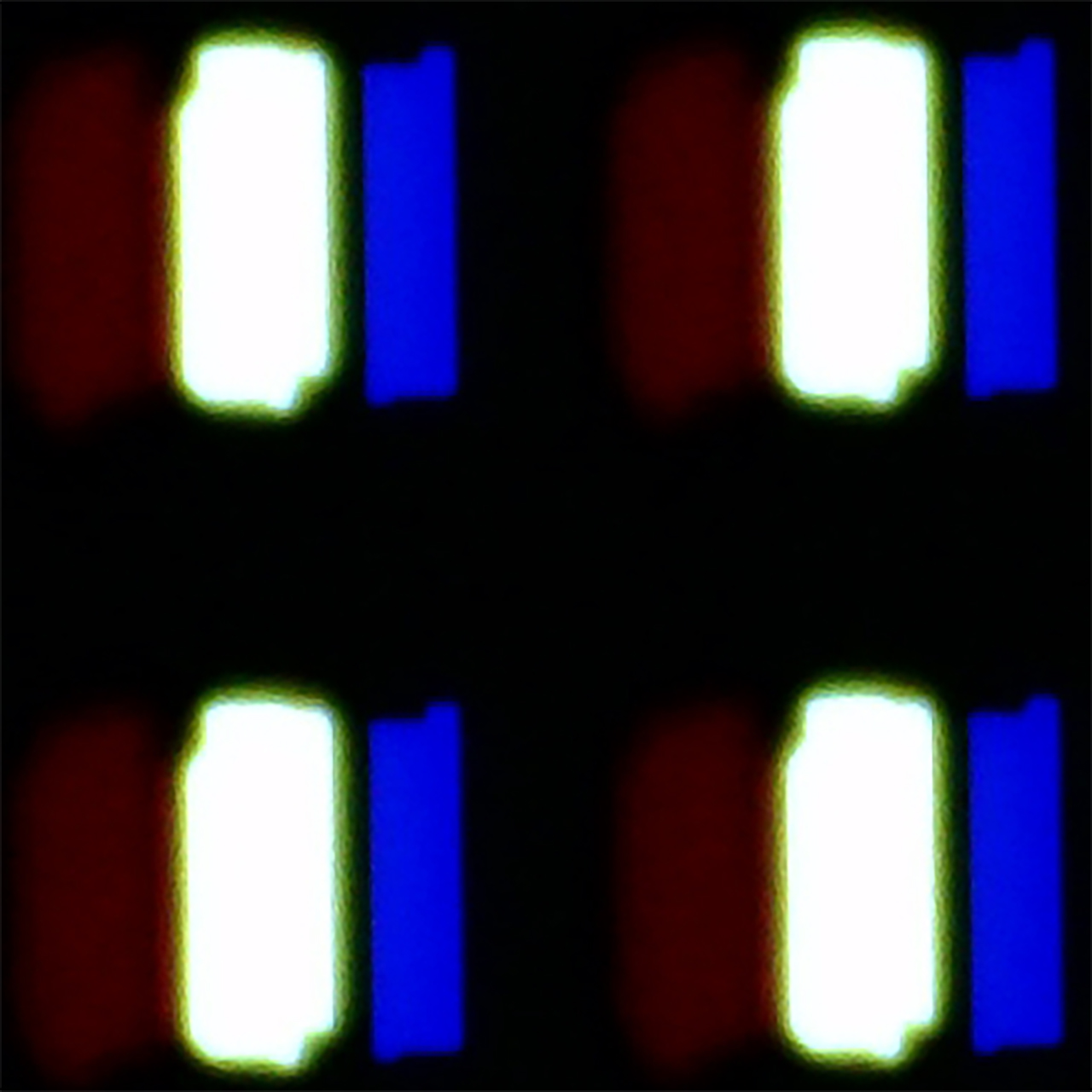
Panel uniformity and thermal imaging:

TV features
9.4/10
7.9/10
- HDMI inputs2 x HDMI 2.0, 2 x HDMI 2.1 48Gbps0 x HDMI 2.0, 4 x HDMI 2.1 48Gbps
- Other inputsIR (remote)
- OutputsToslink (Optical audio), eARC (HDMI), ARC (HDMI)Toslink (Optical audio), eARC (HDMI), ARC (HDMI)
- Network InterfacesWi-Fi 2.4GHz, Wi-Fi 5GHz, Ethernet (LAN) 100MbpsWi-Fi 2.4GHz, Wi-Fi 5GHz, Ethernet (LAN) 100Mbps
- TV receptionDVB-T, DVB-T2, DVB-S, DVB-S2, DVB-CDVB-T, DVB-T2, DVB-S, DVB-S2, DVB-C
Classic features:
- Recording to USB (terrestrial TV)
- Recording programming
- Picture in Picture (PiP)
- RF remote control (no need to aim at the screen)
- Backlit remote control
- Teletext
- Audio only mode
- Bluetooth headphones support
- Simultaneous Bluetooth headphones & TV audio
Smart features:
- AirPlay
- Screen mirroring (Windows Miracast)
- Voice search
- Voice search in native language
- Ability to connect a keyboard and mouse


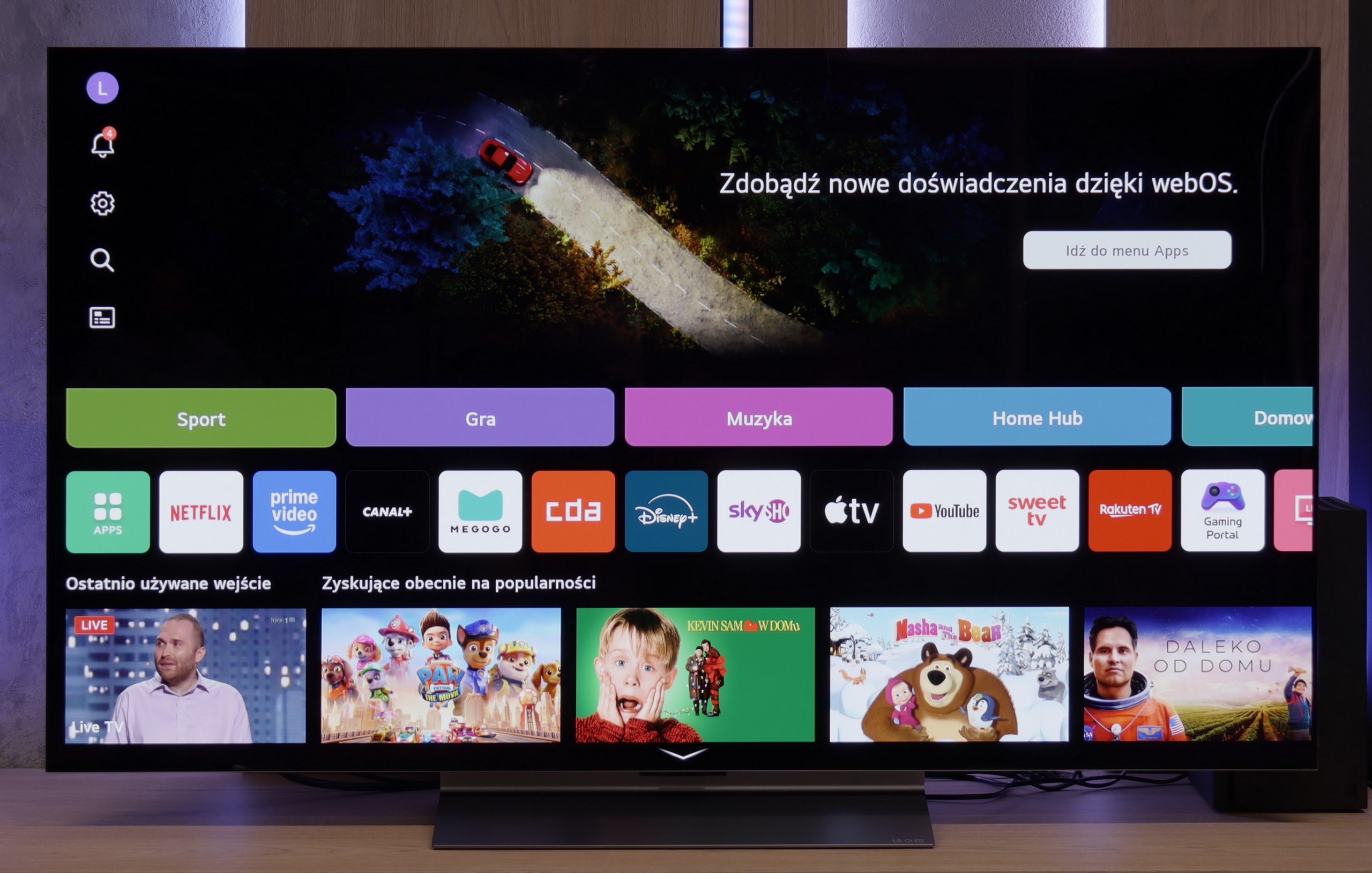
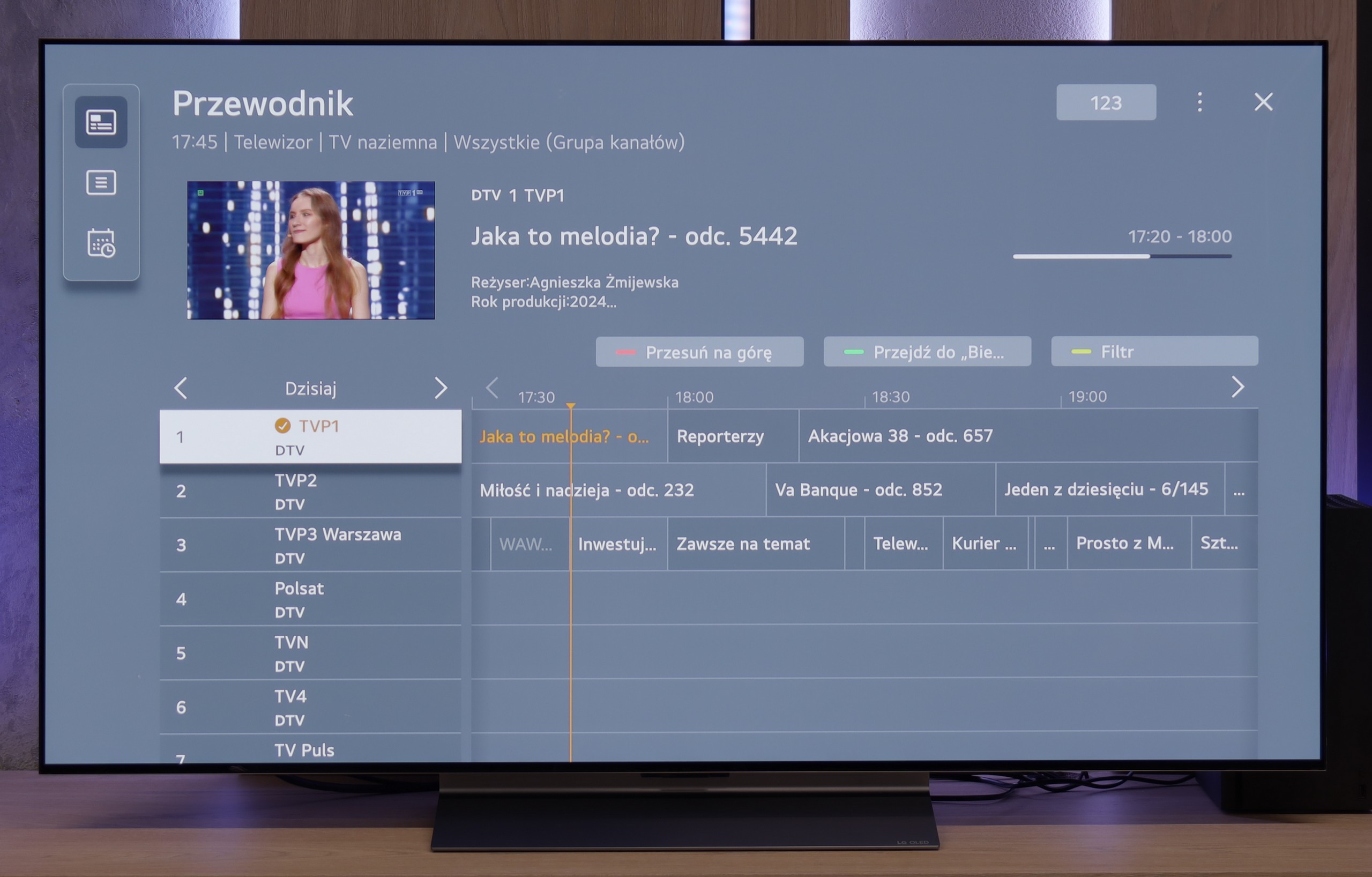
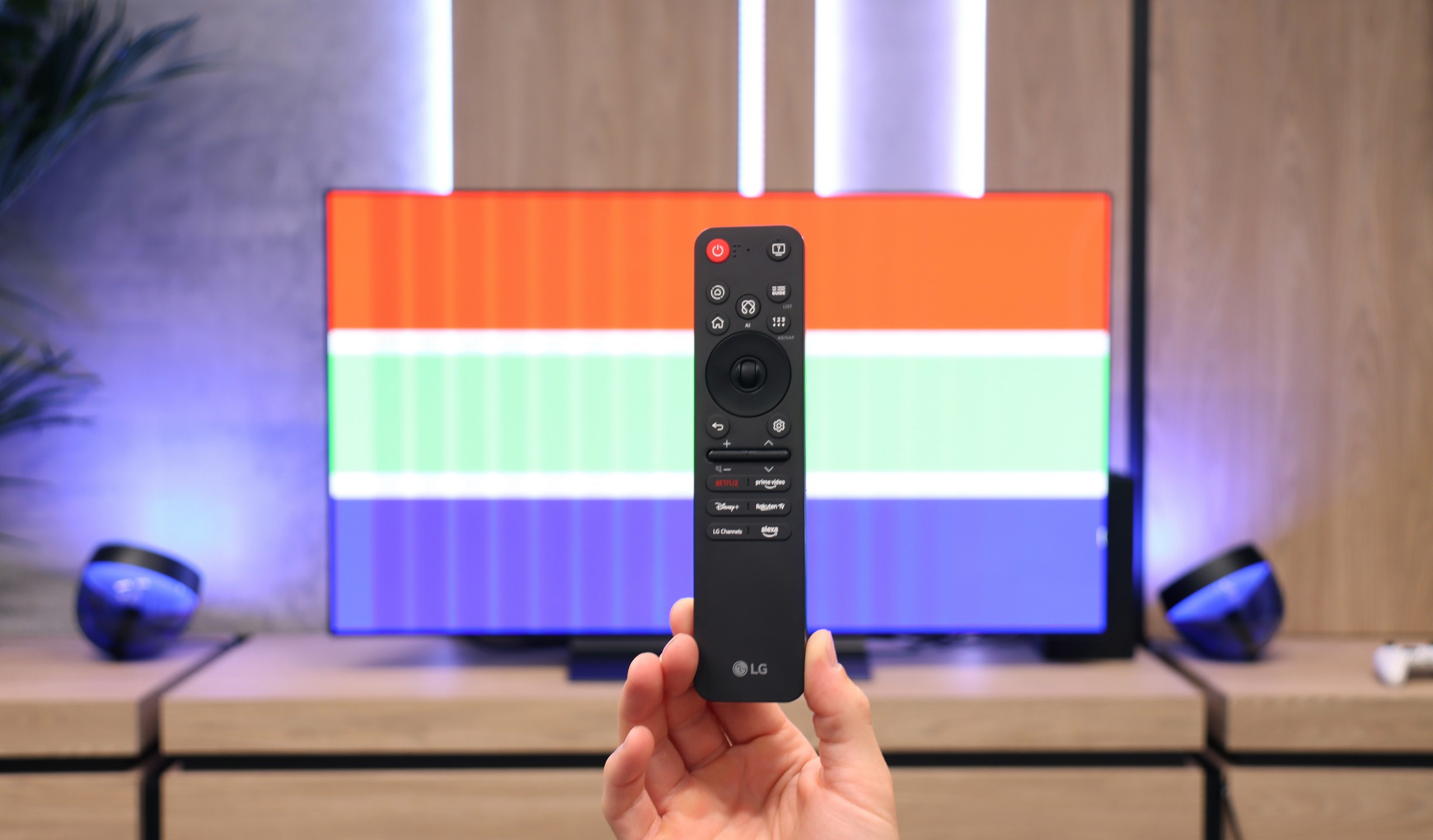
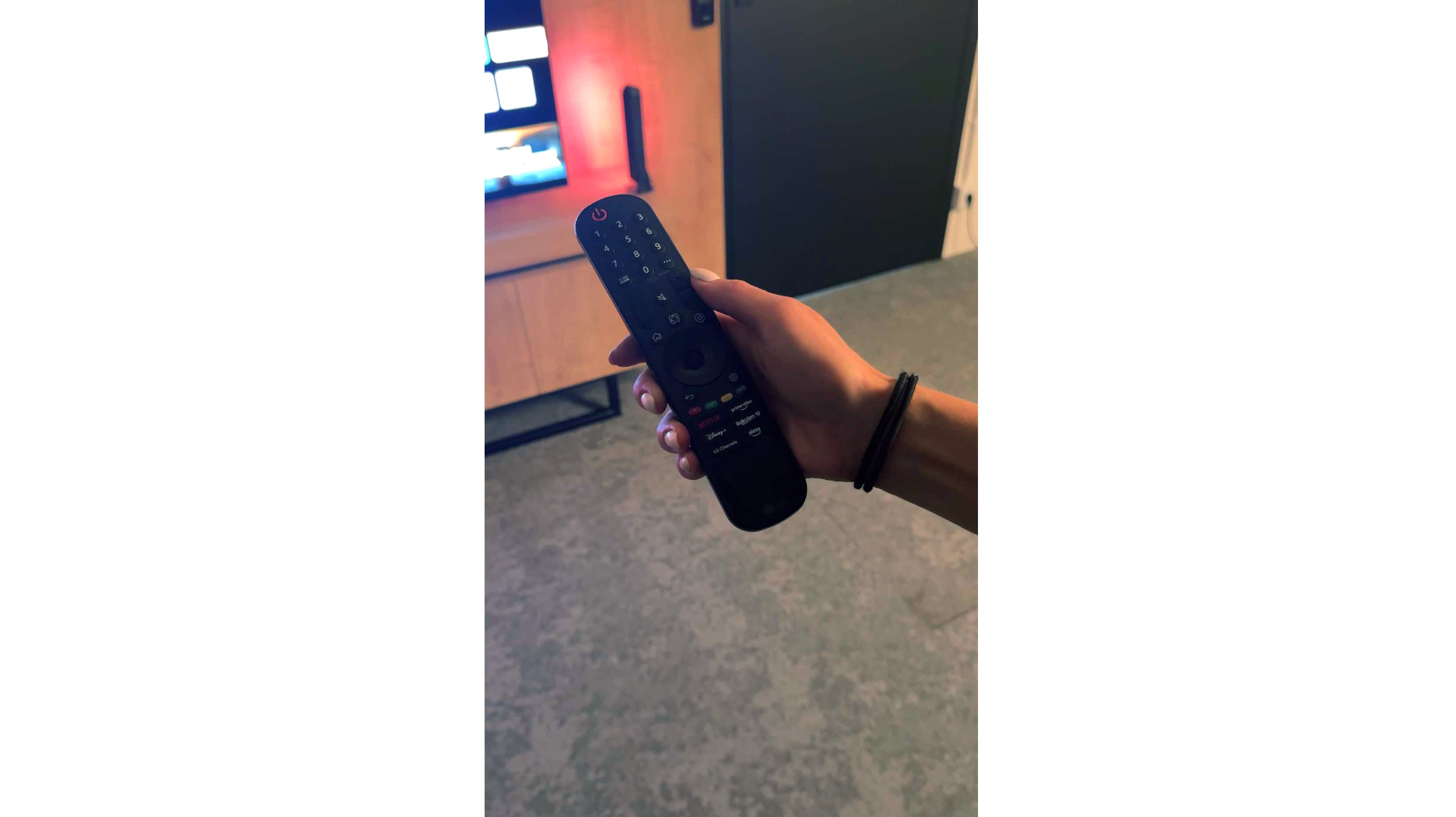
Sony Bravia 8 runs on the Google TV system, which provides very intuitive and quick use of the television as well as an almost unlimited number of applications. Google Assistant works in Polish, allowing for even better integration with the device. The interface is well-designed, and access to applications and features is simple and convenient. It is also worth mentioning the remote control – similar to solutions from Korean competitors, the remote can be charged via a USB-C port. Moreover, it is backlit, which makes it much easier to use at night.
The device offers a wide range of features that will satisfy most users. The Sony XR80 television allows for recording programmes, as well as easy connection of external peripheral devices via Bluetooth. Unfortunately, it lacks the Picture-in-Picture (PiP) function, which would allow for simultaneous viewing of two image sources, which could be useful in certain situations.
The television looks very good. It has a solid, metal frame that gives it an elegant appearance. The television stands on two adjustable feet, which can be adapted in terms of both width and height. This allows for easy placement of a soundbar underneath the screen. Although the Sony Bravia 8 is not the thinnest OLED television on the market, its careful finish and quality of materials make it look really good.
Classic TV functions:
In terms of classic television functions, the LG C5 performs really well. Here we have the ability to record programmes to USB from built-in DVB-T(2) tuners, teletext support, an EPG programme list, as well as seamless pairing of headphones via Bluetooth. For many users, these are still very important elements of daily TV use – and here LG doesn’t lack anything except for the PIP function. It is also worth noting the remote control, or rather... the different versions of the remote. In our test, we used the C54 model, which is equipped with the new version of the Magic remote. It resembles Samsung's minimalist approach – there is no numeric keypad or "source" button, but it looks modern and is comfortable for daily use. On the other hand, other variants, such as C5ELB, may be sold with an older version of the remote – a more classic one, with more buttons and a numeric keypad. Some will find it more practical, while others will consider it outdated. In short: quite a bit of confusion, so it's worth checking the model suffix before making a purchase.
Smart TV:
Regardless of the remote's version, we operate the same system – WebOS. This is one of the most enjoyable solutions in the Smart TV world. An intuitive menu, quick operation, and support for popular features such as AirPlay, screen mirroring, and voice assistant make the system perform very well on a daily basis. Additionally, cursor control via the gyroscope in the Magic remote remains one of the most convenient forms of navigation in televisions. There are really many applications available – Netflix, Disney+, HBO Max, Apple TV, and many others. However, it should be noted that this is not a system based on Android/Google TV, so it might happen that we simply won’t find some less popular application in the LG store.
Playing files from USB
8.7/10
8.8/10
Supported photo formats:
Maximum photo resolution:

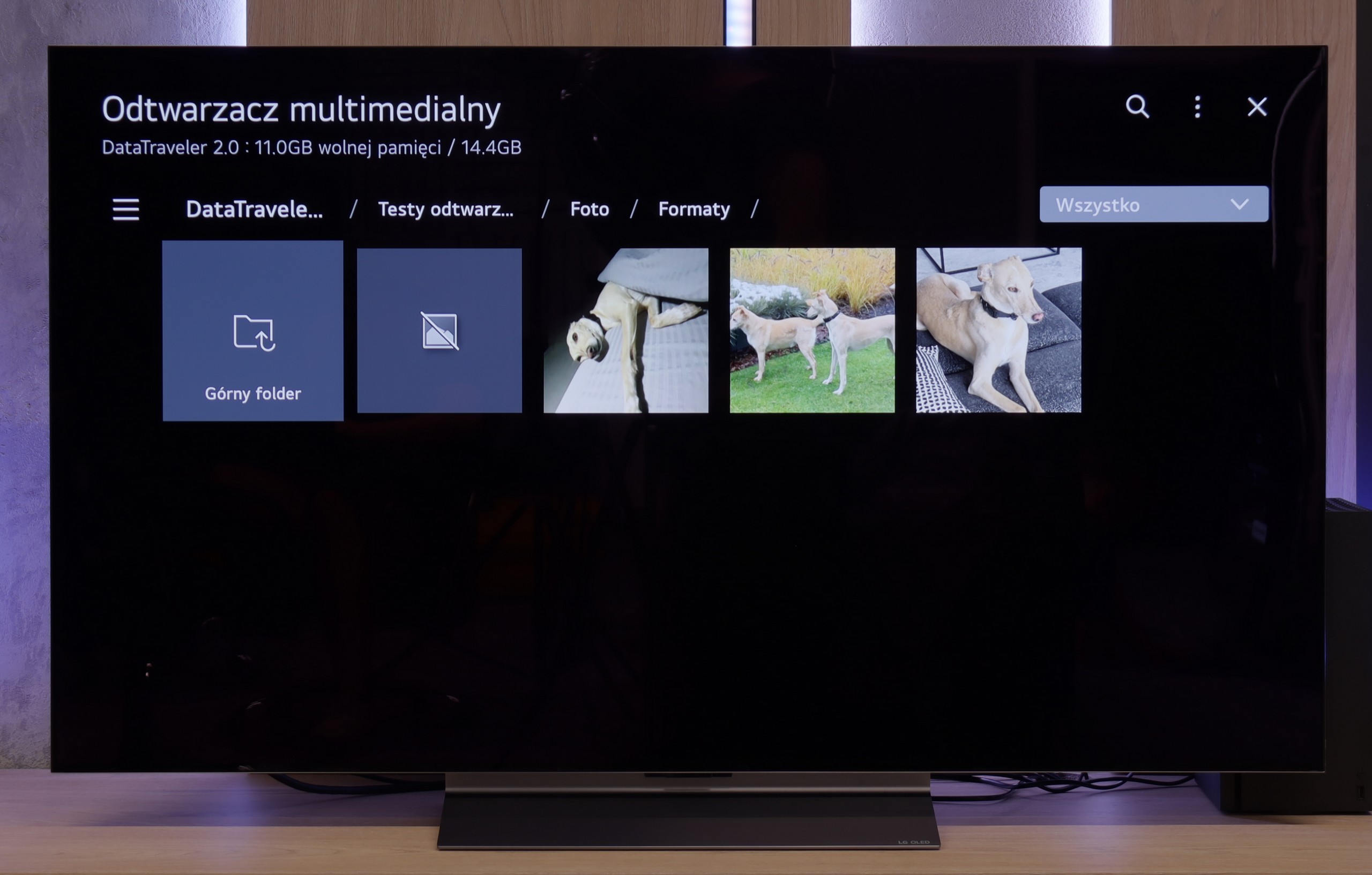
Sony Bravia 8 will satisfy most users when it comes to playing multimedia files. The built-in player handles most popular video and audio formats, allowing for seamless access to a wide range of content. Although there are some shortcomings in photo playback, the Google TV system allows for the installation of other players that will likely resolve this issue.
The LG C5 is equipped with quite a decent built-in media player, which should meet the expectations of most users. It supports popular video and audio formats, handles subtitles in SRT format, and opens most graphic files without major issues.
The interface itself is fairly simple and intuitive – it doesn't surprise, but it also doesn't cause difficulties in daily use. Of course, it's not on the level of external players or applications from Google TV, but for basic playback of films from a pen drive or hard drive – it is more than adequate.
Apps
9.6/10
9.1/10














































Sound
7.5/10
7.2/10
- Maximum volume-84dB
- Dolby Digital Plus 7.1
- Dolby True HD 7.1
- Dolby Atmos in Dolby Digital Plus (JOC)
- Dolby Atmos in Dolby True HD
- DTS:X in DTS-HD MA
- DTS-HD Master Audio
Bravia 8 is equipped with a 50W sound system in a 2.2.1 configuration. The speakers are mounted behind the screen, and this system is called Acoustic Surface Audio. The sound is pleasant and well-balanced, which makes it perfectly complement the picture. When it comes to audio format support, Sony Bravia 8 has a lot to boast about – in our tests, it played all popular codecs without any issues, providing a full and rich audio experience.
For such a slim television, the LG C5 surprises with quite good sound quality. Within its thin casing, a set of specific speakers has been incorporated, which produce clear sound, with well audible details and – surprisingly – a light yet noticeable bass. It is more than sufficient for everyday viewing, and in many cases, it might even offer a pleasant surprise. It is a pity that this year LG decided to completely eliminate support for DTS codecs. For most people, this will not be a problem, but if someone uses Blu-ray discs and enjoys this format – especially in its more advanced versions – they may feel its absence. In such a case, an external amplifier or soundbar with appropriate audio support remains the option.
Sound Quality Test
No sound test video
Acoustic Measurements
No acoustic data
84dBC (Max)
75dBC
